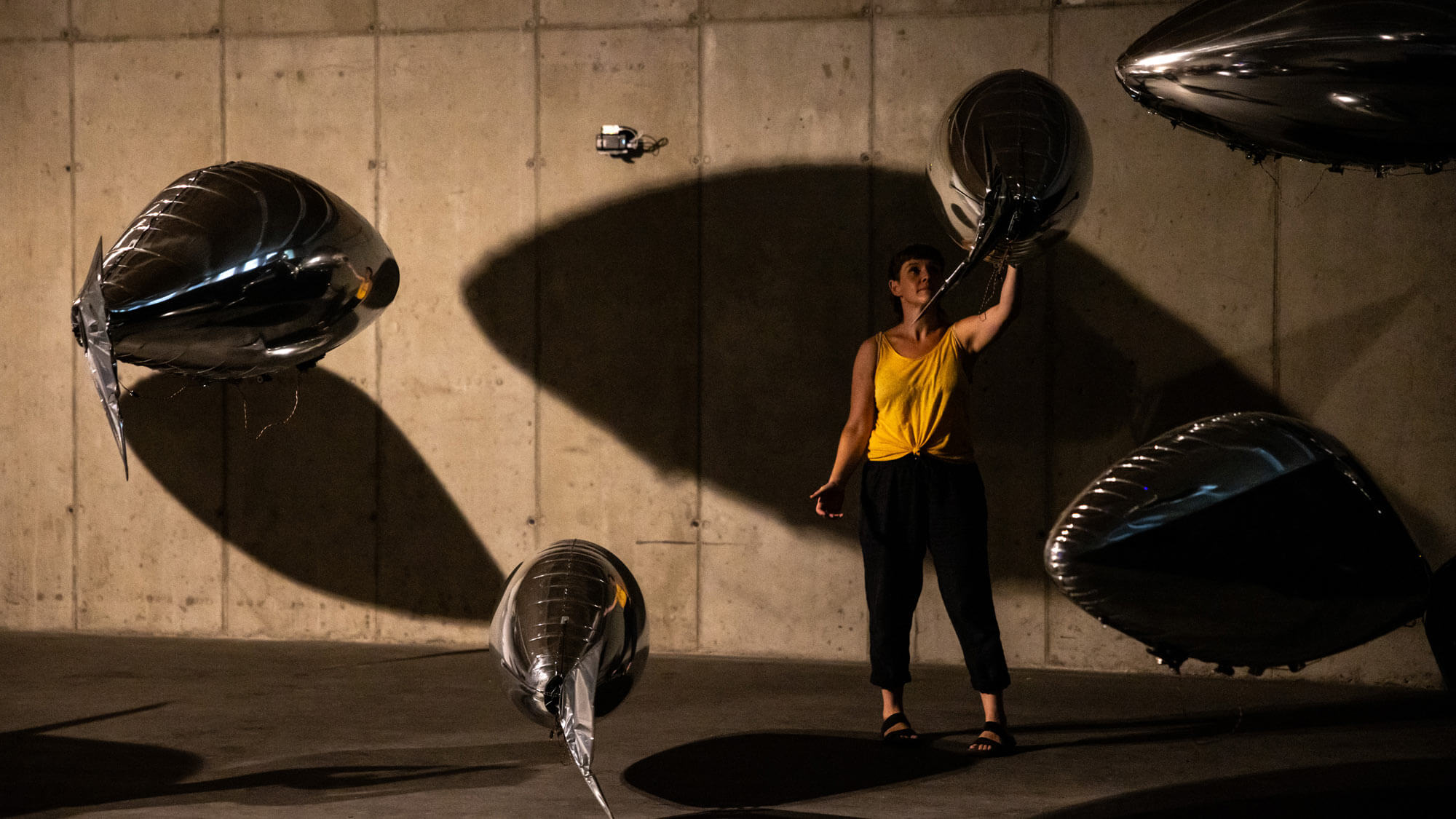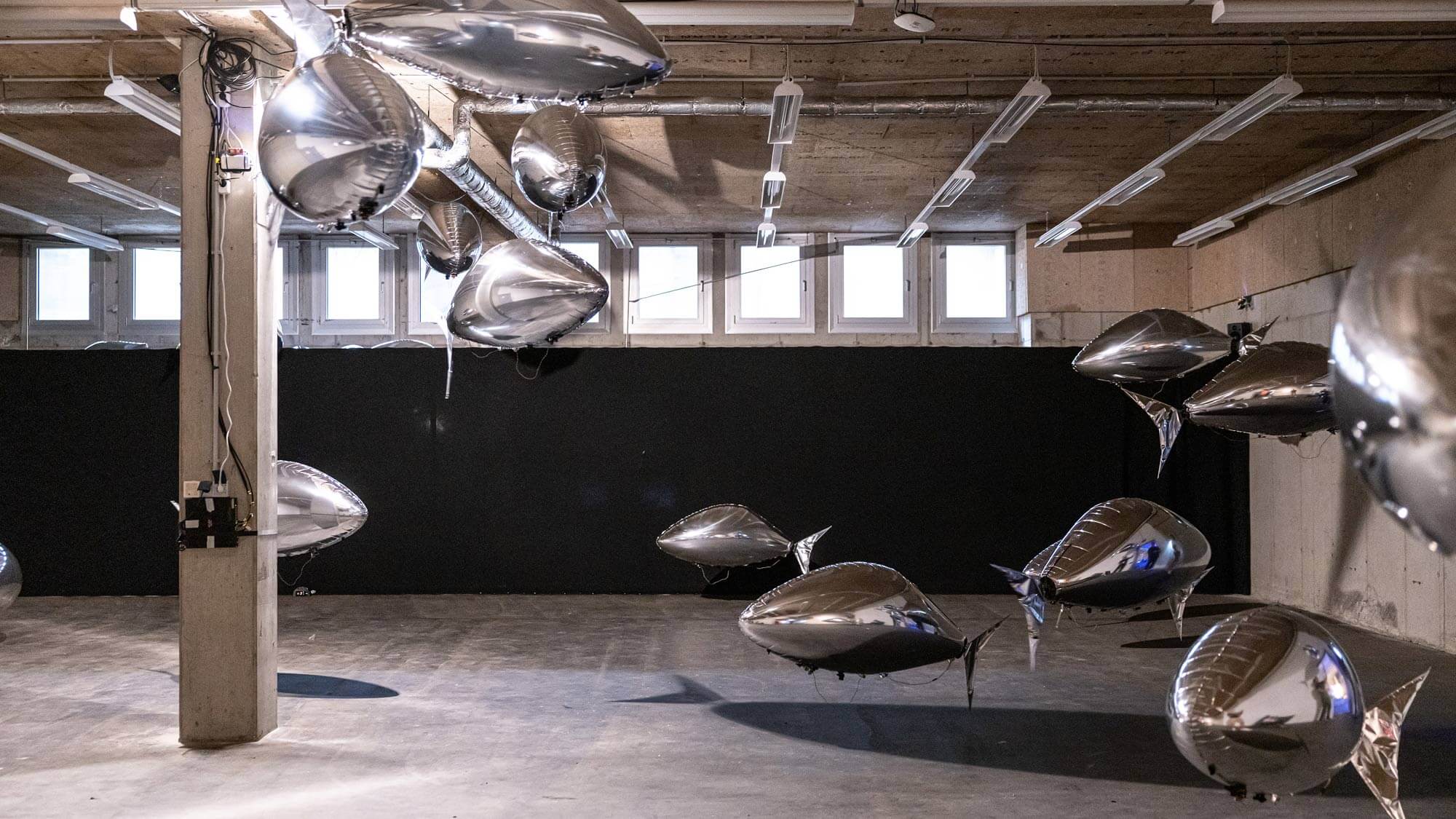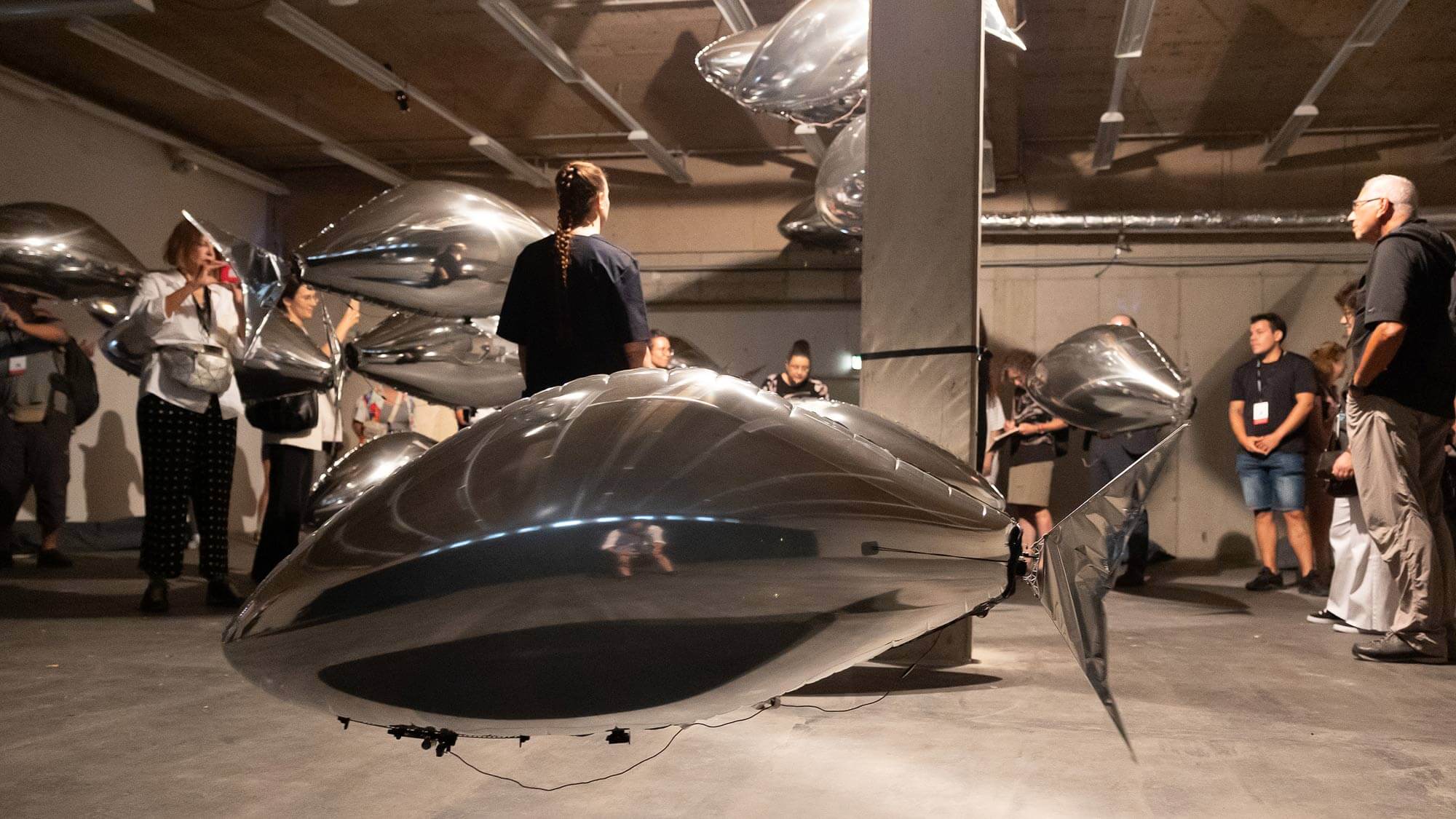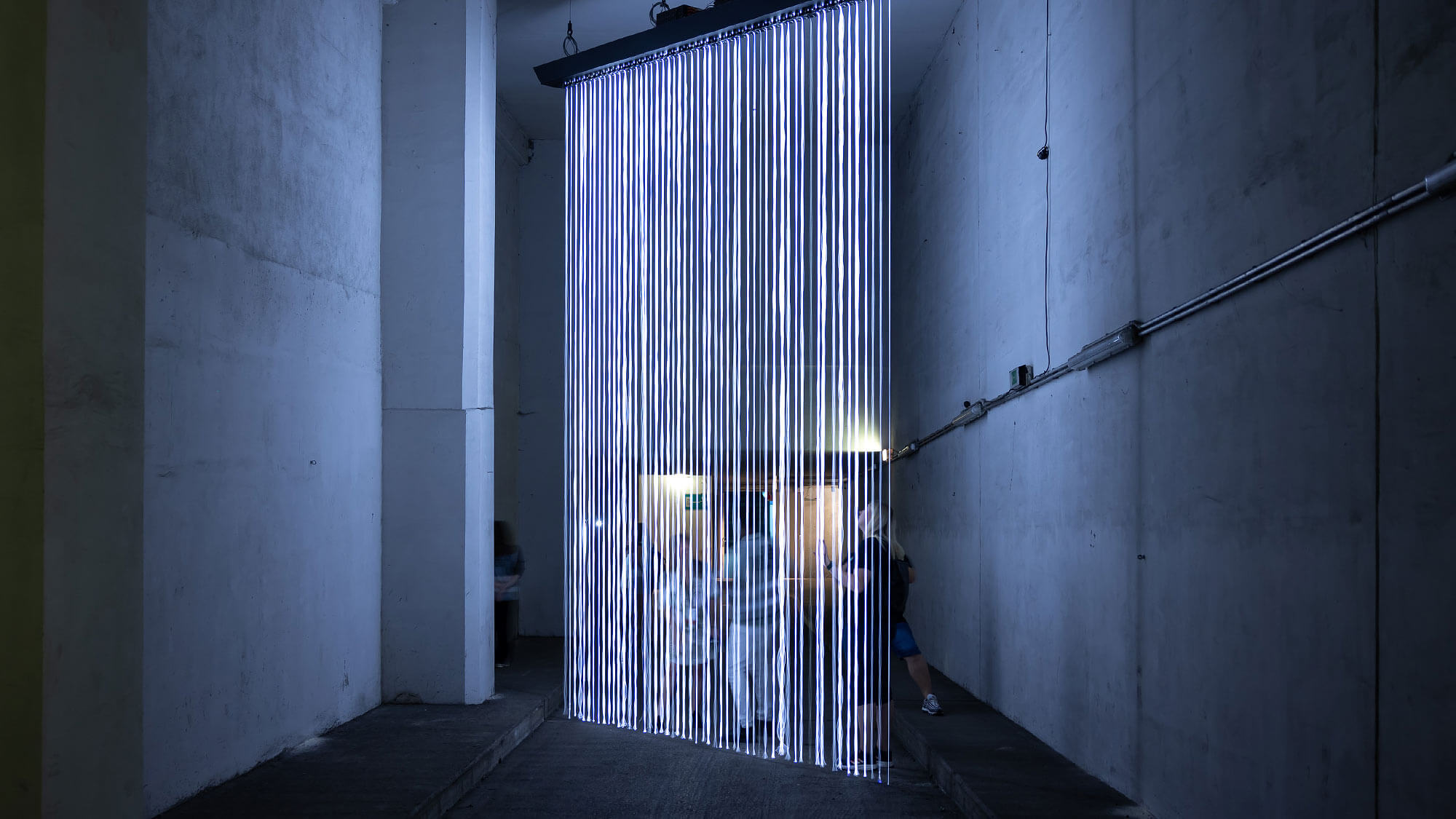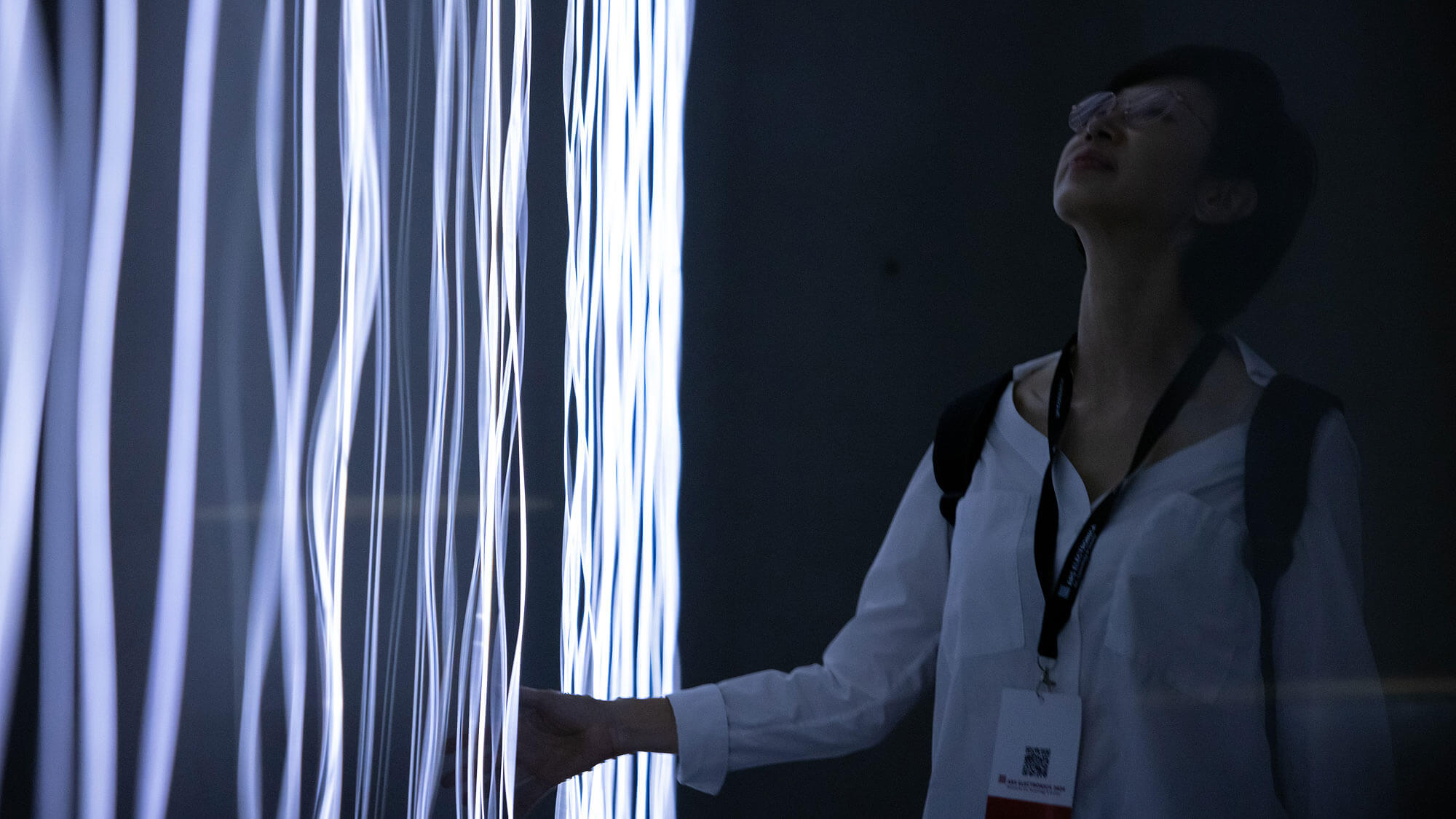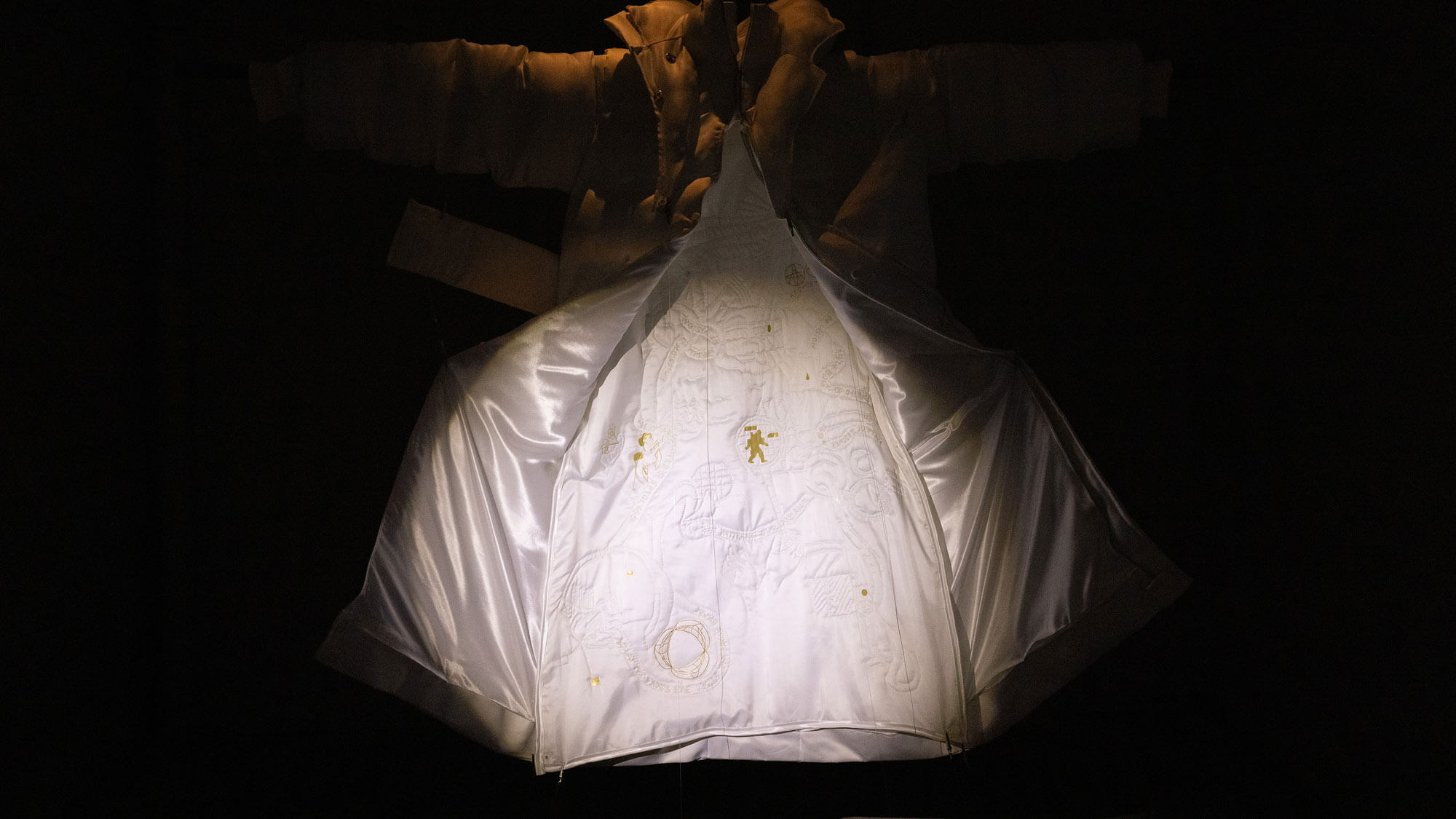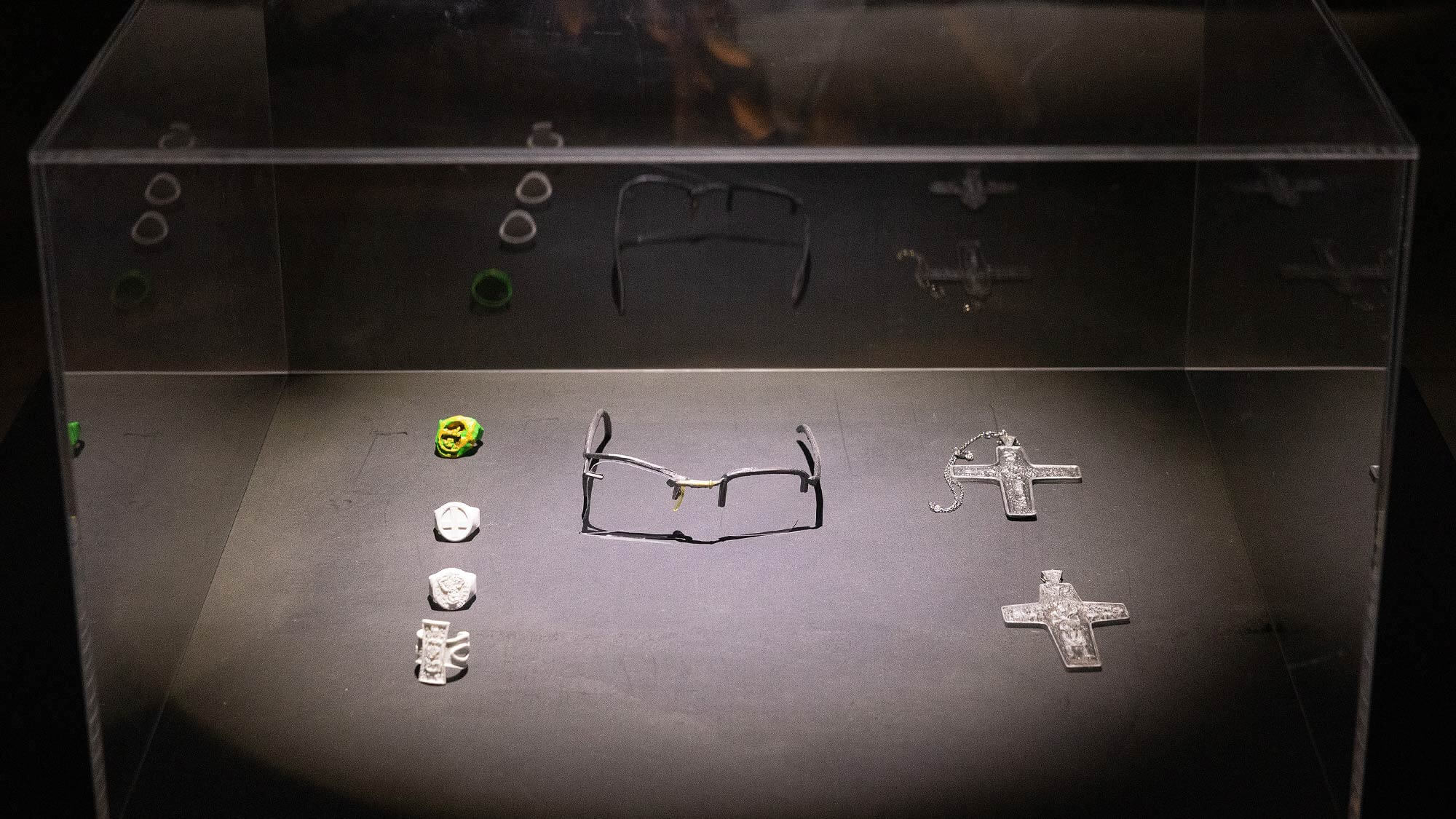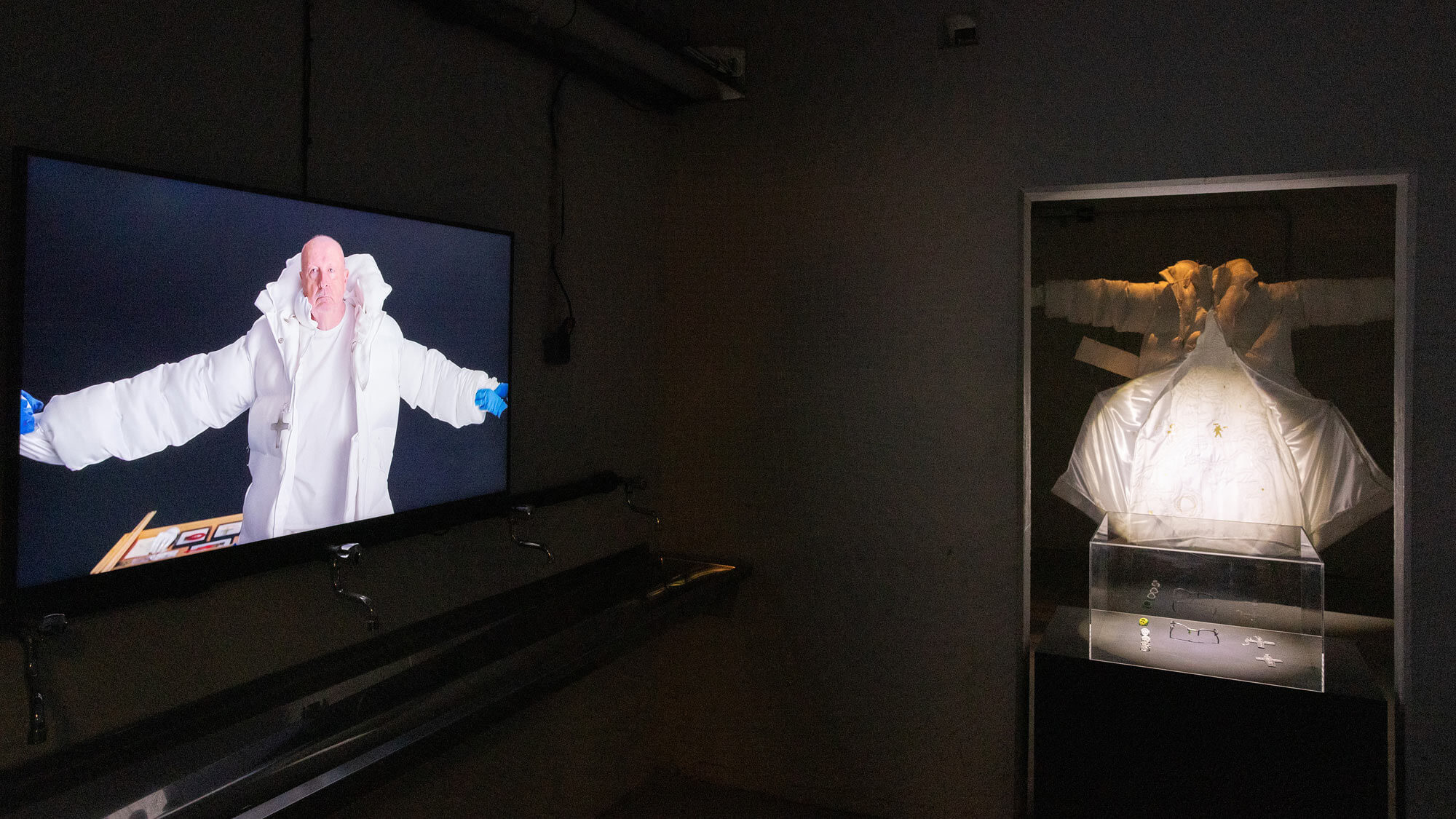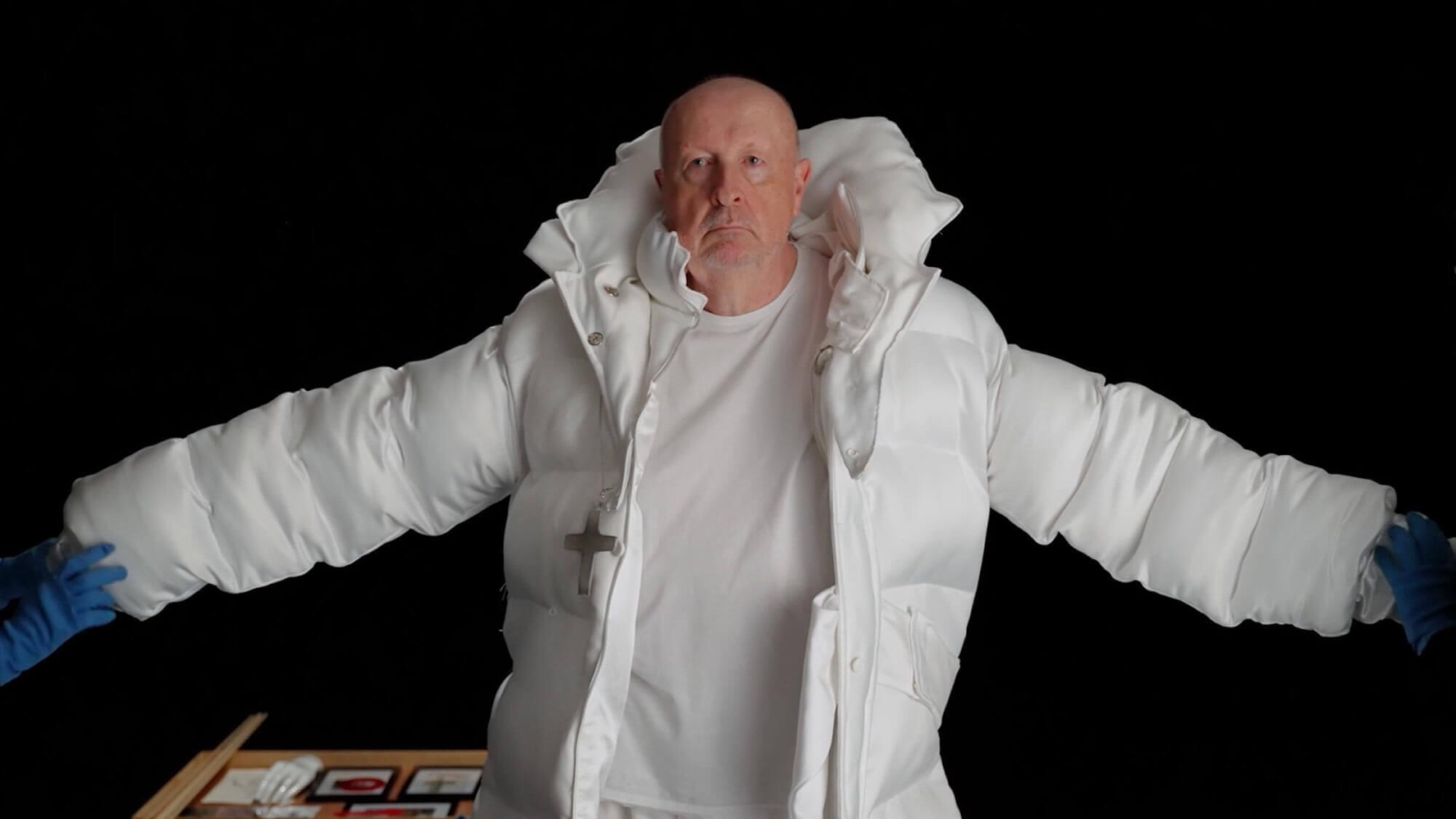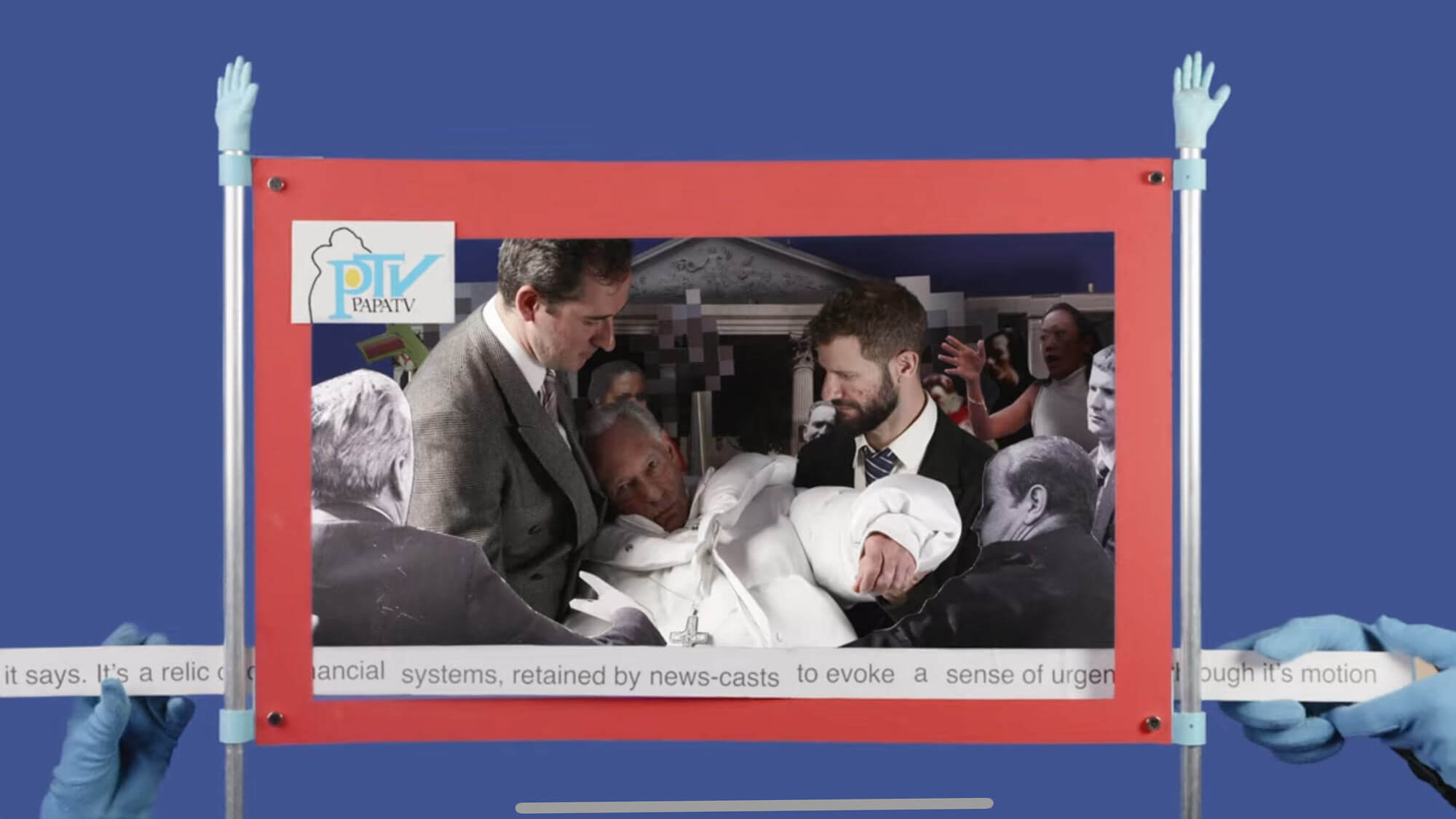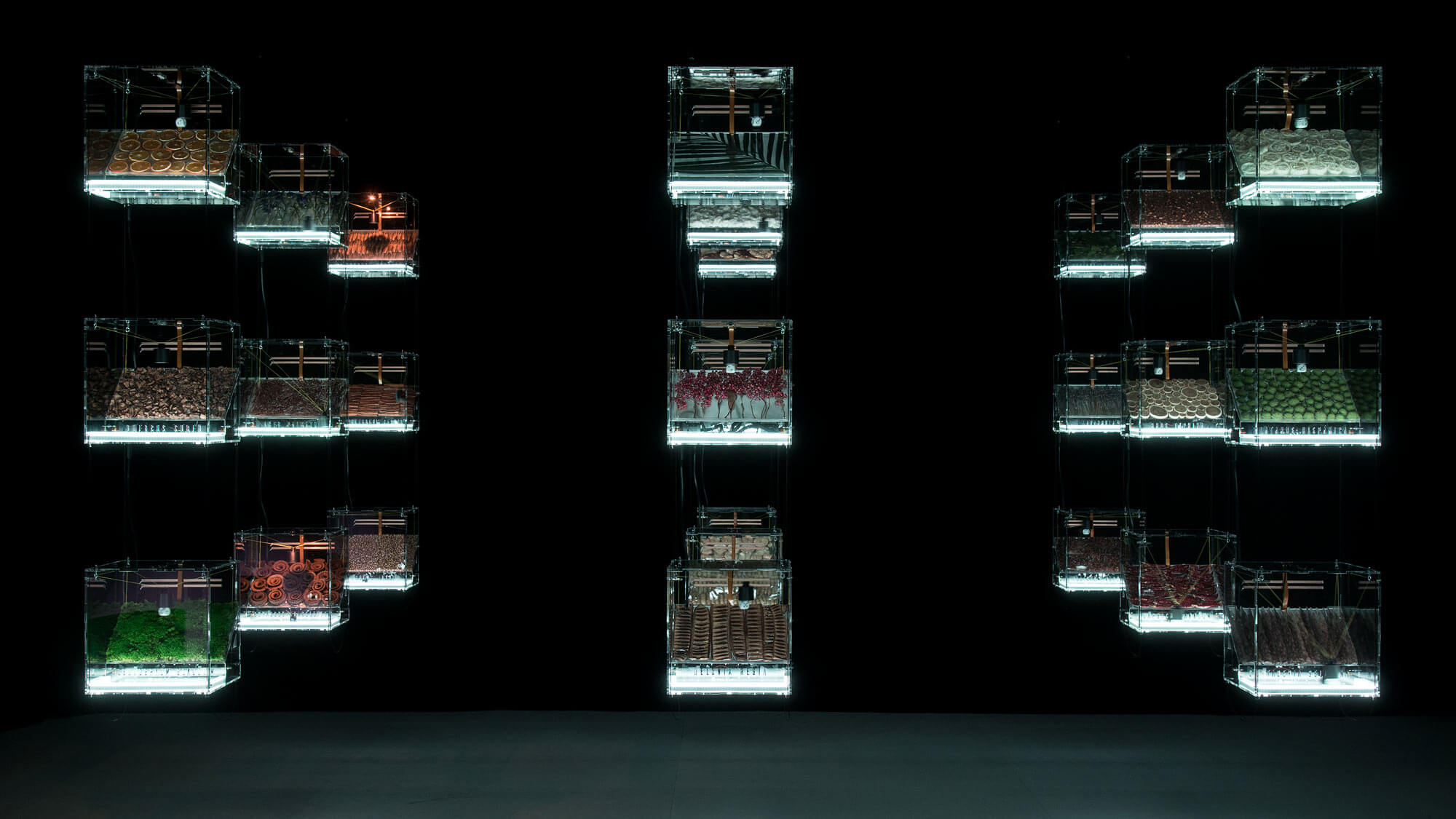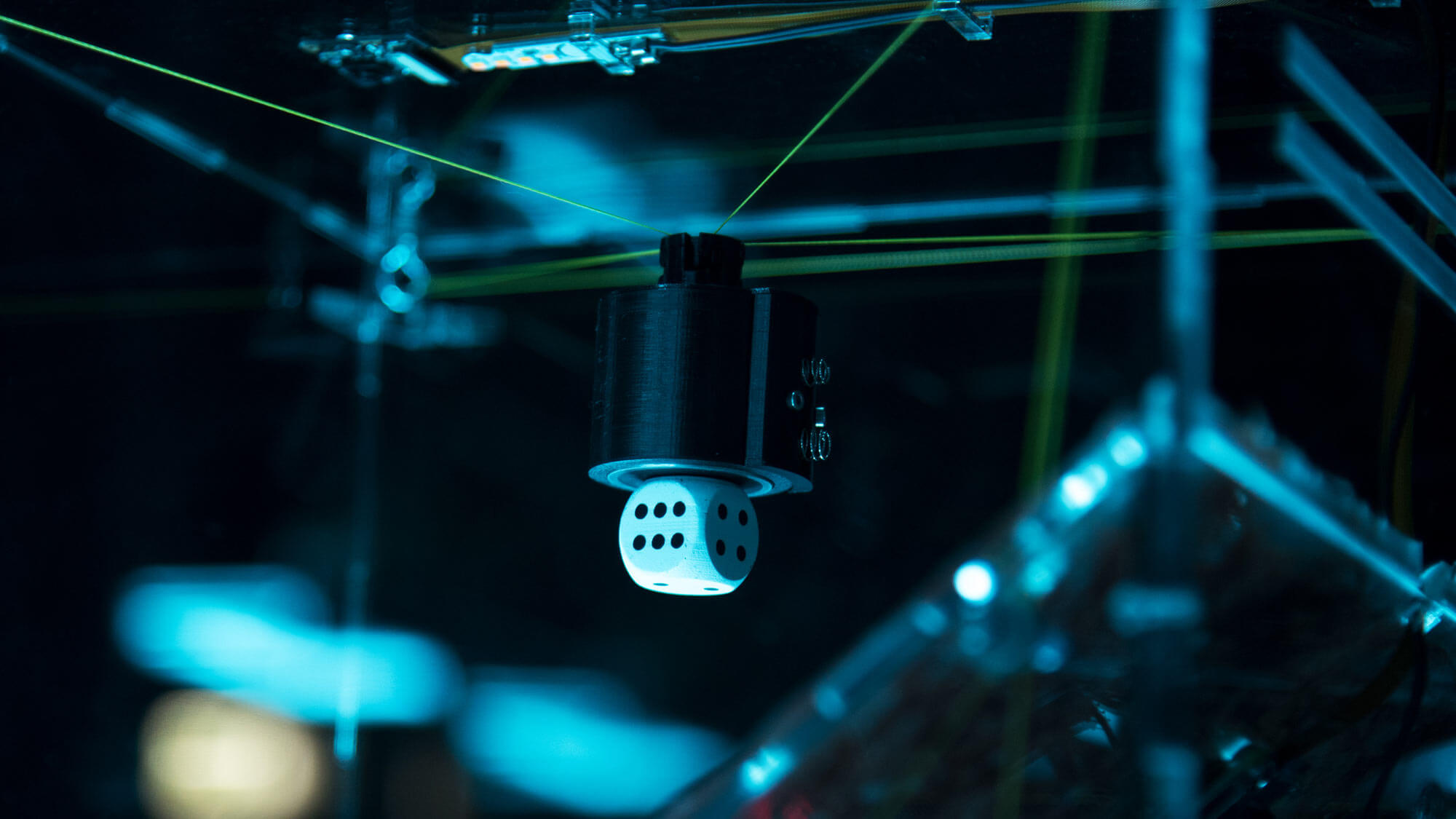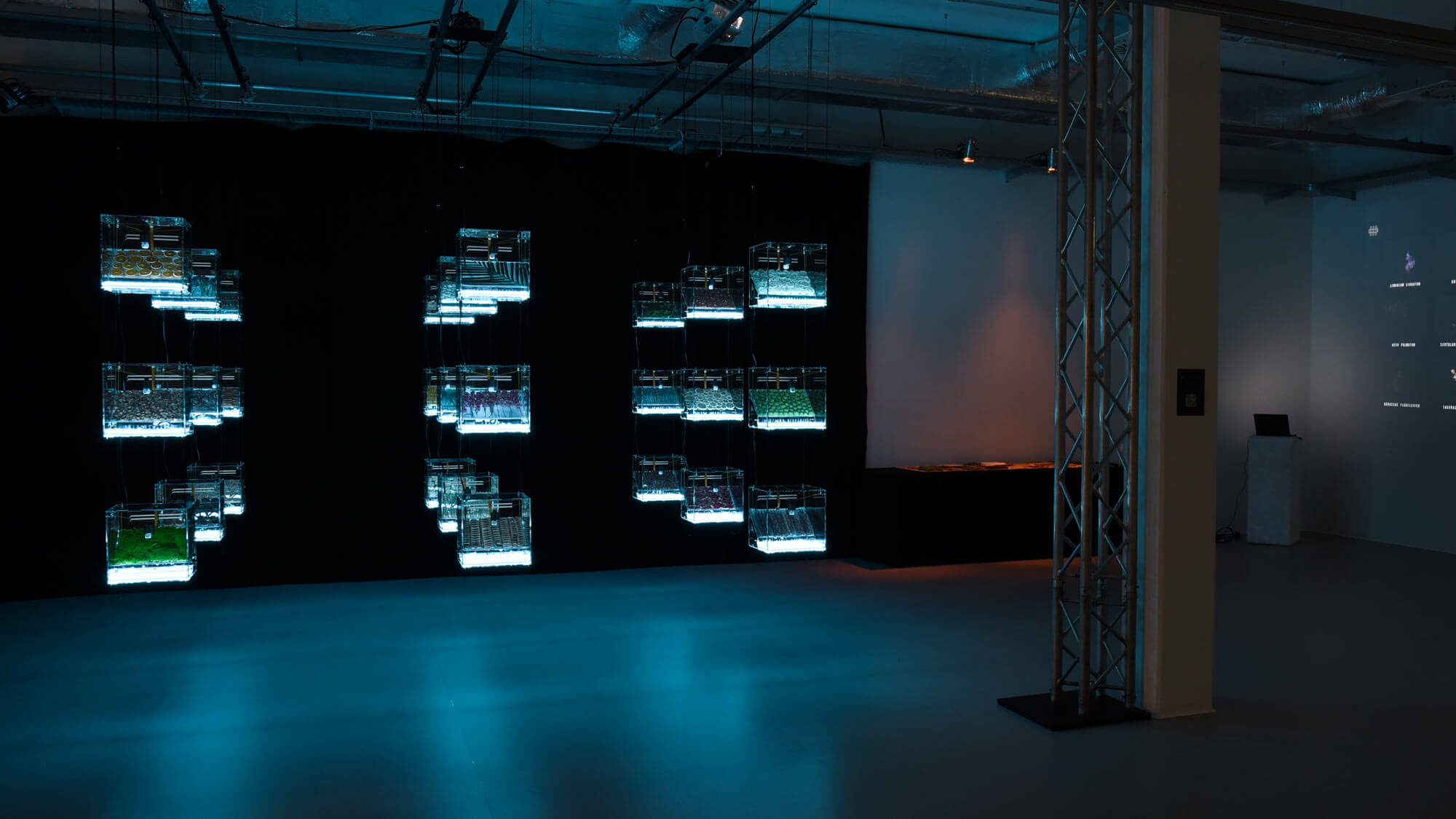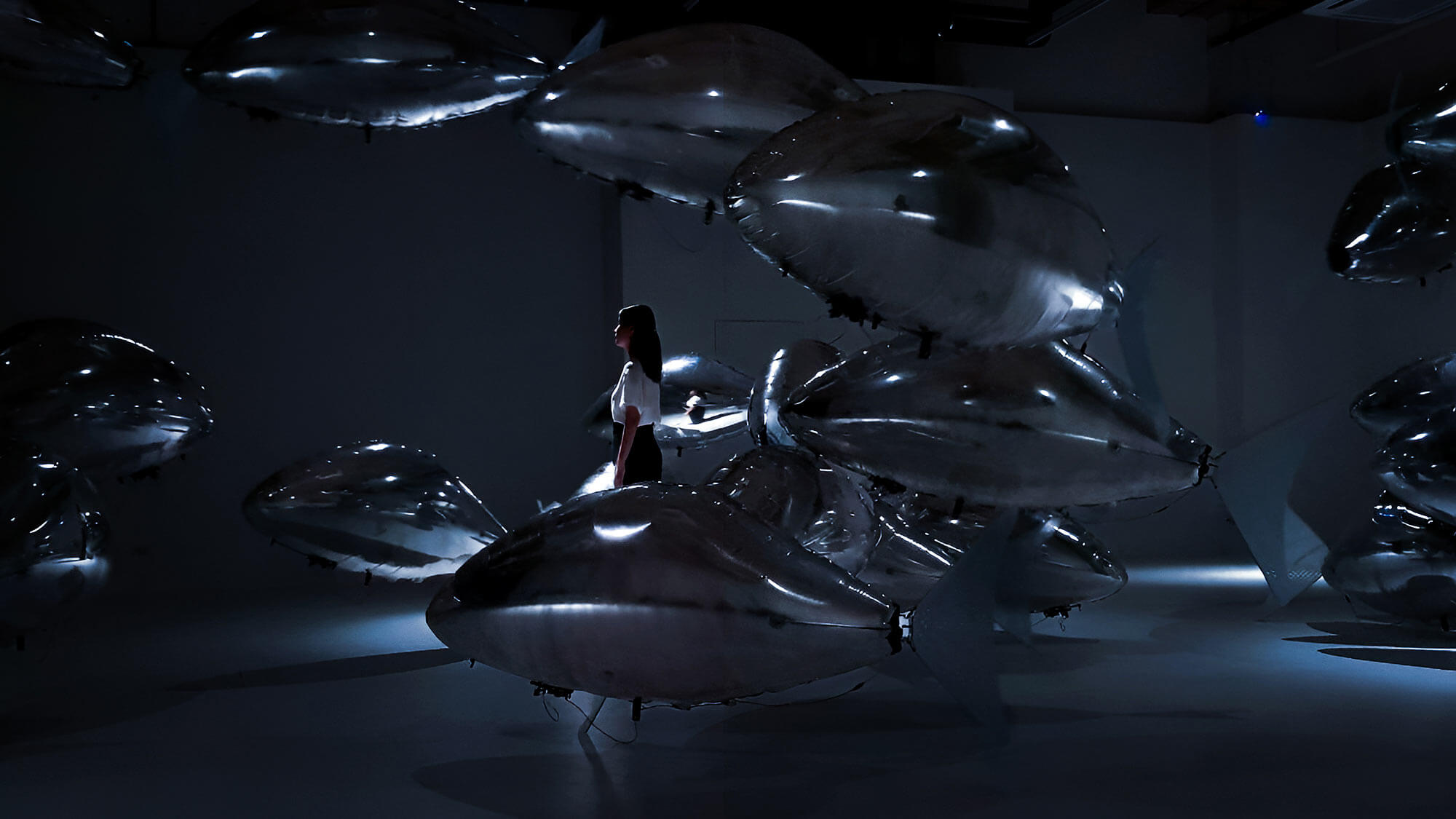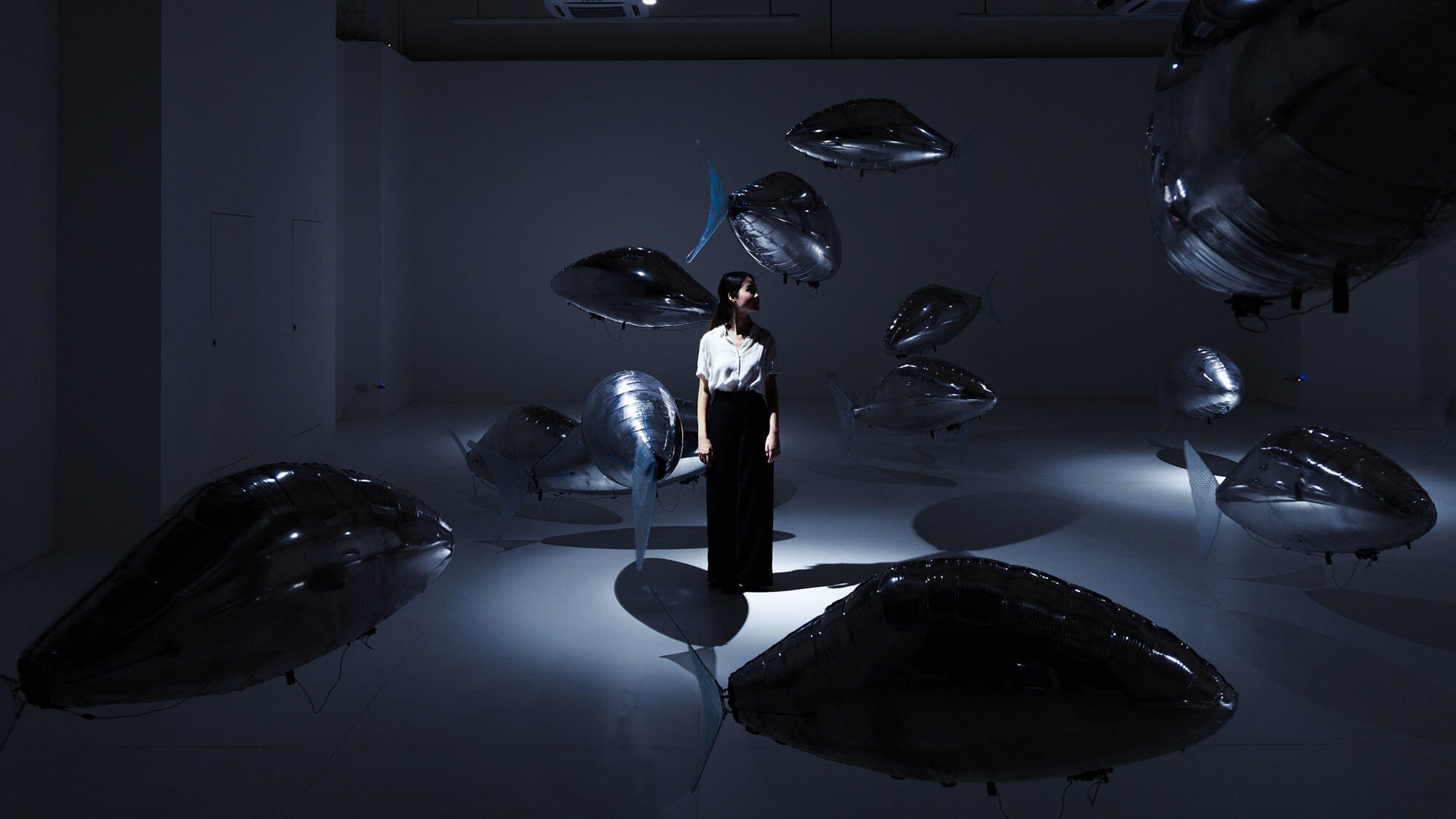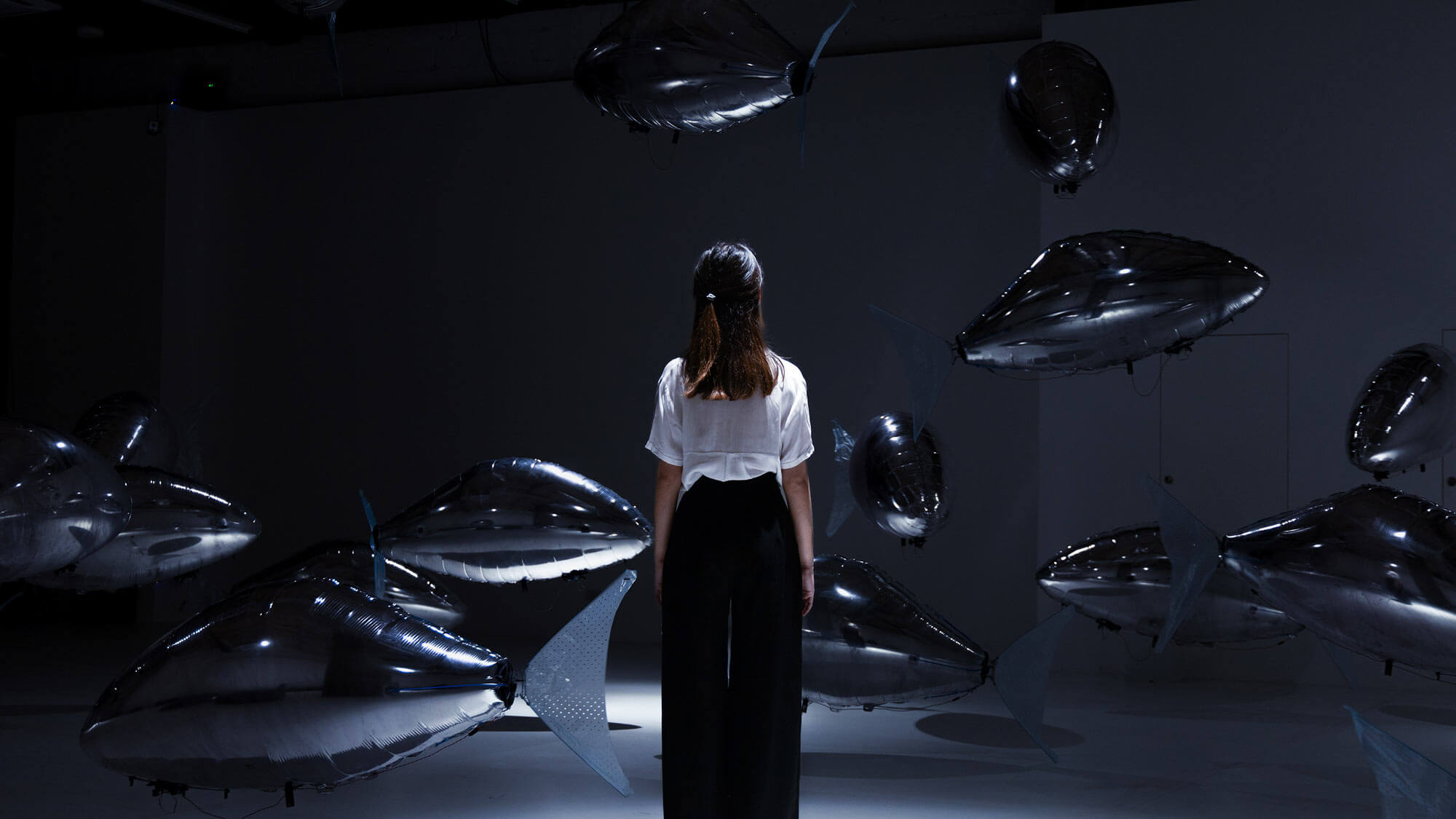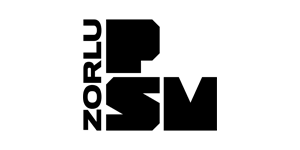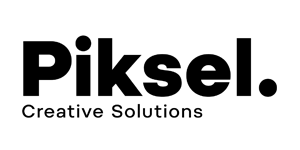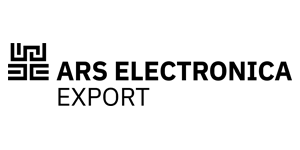Zorlu Performing Arts Center and Piksel. Creative Solutions partner up to bring a collaborative exhibition with Ars Electronica to Istanbul. In 8 days, visitors can immerse themselves in the artistic creation of 15 exhibiting artists and collectives, can participate in workshops, performances and a music program.
Type: Exhibition Participation
Duration: October 21 – 28, 2025
City, Country: Istanbul, Turkey
Venue: Zorlu Performing Arts Center
Curatorial Statement Data (&) Fragility
In a world increasingly governed by algorithms and predictive models, data is often framed as solid, objective, and reliable. Yet this presented reality is deceptive and fragile.
“Data Fragility” can refer on the one hand to study results that are sensitive to small changes in the data, while in a broader sense, it can describe data derived from a poorly designed or unreliable study. Systems shaping today’s economy are more focused on data and directing the world through data analyses rather than actual human and non-human needs. The artist in the exhibition Data (&) Fragility search, find, record, transform data into artistic creations and present the vulnerability as well as the potential of a data-driven world. Fragility emerges not only as a risk but also as a space of possibility.
Data & Nature
We explore works that treat data as a tangible material, transforming numbers into sensory experiences through data storytelling. These pieces break free from the confines of the screen, inviting us to engage with them on a spatial level fostering a connection with nature, emphasizing interaction and understanding through sensing.
Data & Manipulation
Artists delve into how Deep Fake technology influences the data-driven economy and, by extension, shapes our reality. They explore what data-driven perception and memory entail and examine how navigating through data noise can lead to confusion and irritation. Through AI and data-driven falsifications, noise and disturbances emerge, positioning data-driven technologies as pivotal players in molding our tangible world.
Data & Performativity
Data transforms into a dynamic exploration, investigating the space between natural appearance and synthetic essence to uncover what brings something to life. This part of the exhibition journey involves multi-sensory stimulation, reasserting the body’s role as an active participant in creating meaning and fostering empathy.
The exhibition Data (&) Fragility introduces artworks that help us navigate the unknown by translating the invisible into tangible experiences.
Artworks
Ars Electronica exhibition participation
Universal Everything (INT)
Symbiosis
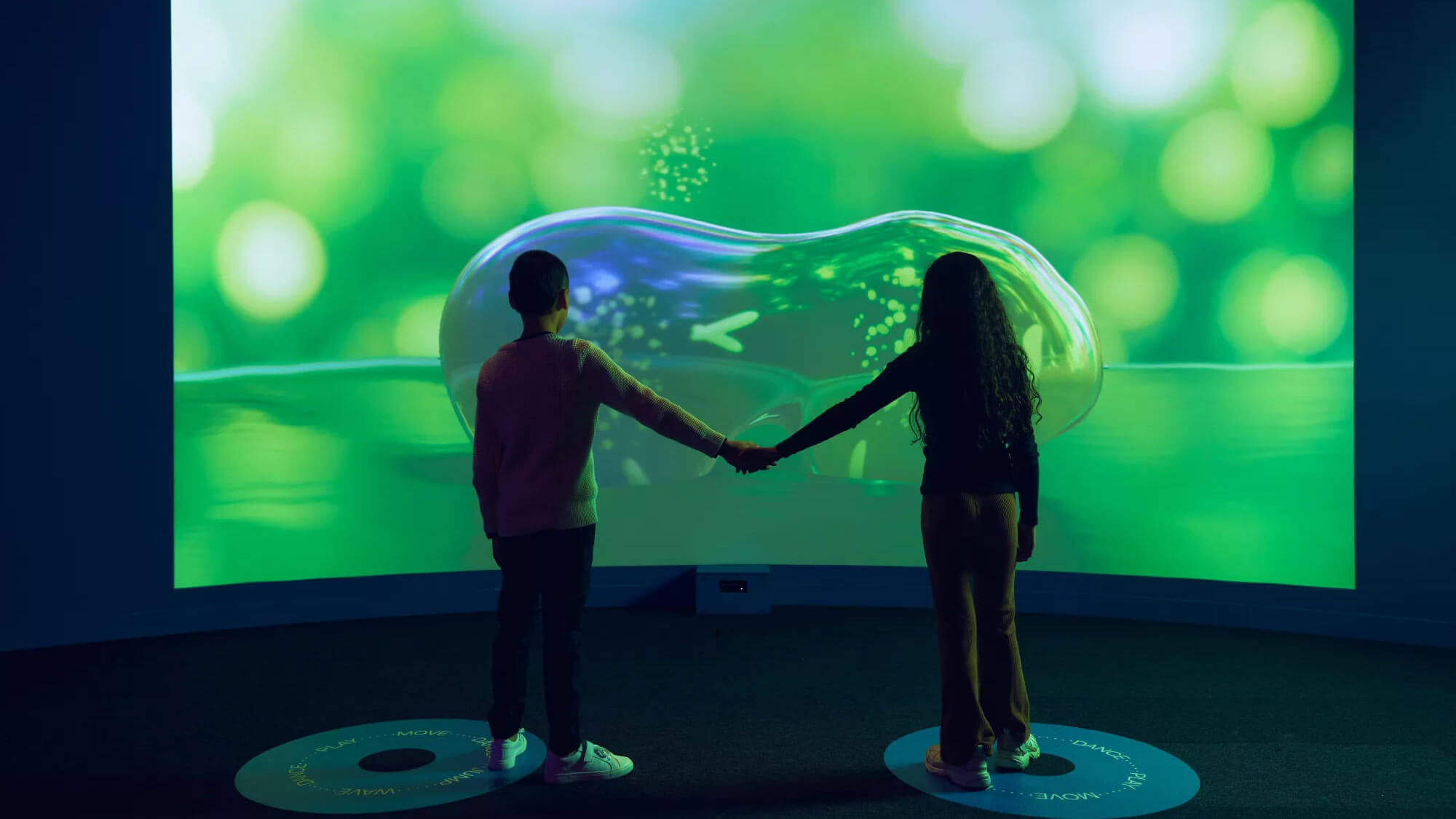
Interactive Video Installation, 2024
Symbiosis is an interactive window into another world – one that’s strangely familiar but alien at the same time. Could it be peering inside your body at the gummy microscopic cells that make you? Or two rain drops on a leaf?
This artwork uses generative techniques to create an interactive and real-time animation and musical structure. Symbiosis makes the miniature appear monumental. Here, you get to slow down and explore how unrushed and deliberate evolution is, as you and another person stick, slide and combine to create tiny new life. Or bubble on alone, stretching and squelching across the screen as you return to the basic shape that starts all life.
Bio
Universal Everything (INT) is a collective of media artists, experience designers and future makers founded in 2004, working remotely with members in different countries. Their positive approach towards the future and focus on the audience bring their artworks, as well as their brand collaborations and prototype designs, to life. The studio creates digital playful experiences that subvert traditional cinematic practices, giving rise to new forms of moving images, interaction, and immersive spaces.
Website: www.universaleverything.com
Credits
Creative Director: Matt Pyke
Executive Producer: Claire Spencer Cook
Technical Development and Animation: Chris Mullany
Sound Design: Simon Pyke
Studio Technician: Spike Thompson
Photography: Michelle Tran, courtesy of ACMI
Marc Vilanova (ES)
Cascade
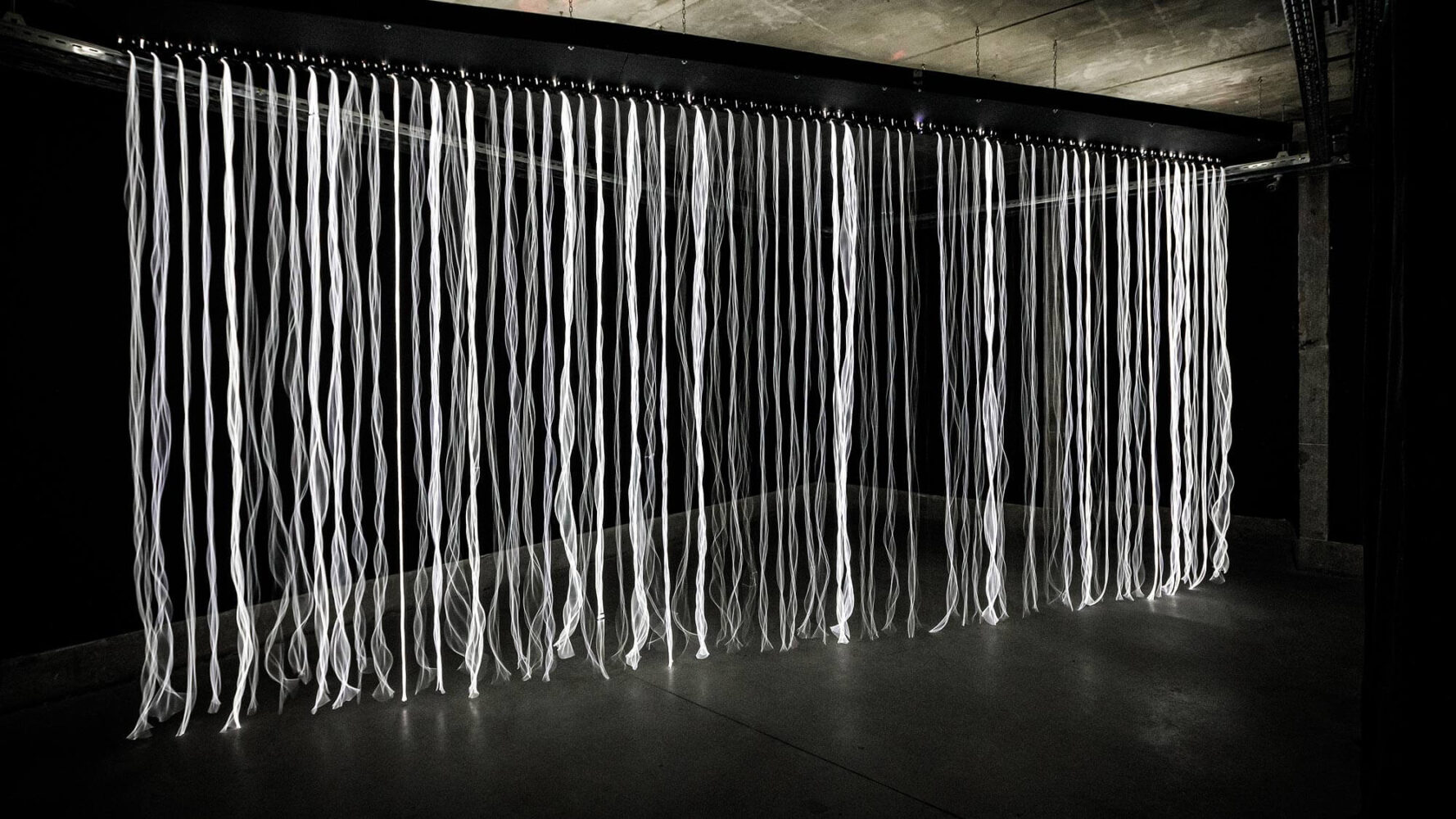
Interactive Sound Installation, 2023
Waterfalls emit infrasonic frequencies vital for the navigation of certain birds, which use them as a compass during migrations. Today, noise pollution from industrialization threatens this journey. Cascade attempts to reproduce the infrasonic recordings of various waterfalls using small speakers incapable of emitting such low frequencies. Instead, their vibrations set an optical fiber in motion, so that the sound “falls” as a curtain of light. You are invited to listen differently — to see sound waves as light, and to feel them with your body.
This experience challenges your auditory and perceptual capacities, decentering your position as human and therefore “the measure of all things”. Here, vibration can be seen, felt, and touched with the skin, offering you a multisensory way of “feeling with” others, and of recognizing interspecies connections.
Bio
Marc Vilanova (ES) is a sound and visual artist based in Barcelona, Spain. His works take the form of expanded sculptures that create a dialogue between sound, light, and movement. Through technological and material experimentation, his practice engages with acoustic ecology, posthumanism, and the thresholds of perception. His intimate, sensorial environments invite deep listening as a form of environmental awareness, fostering attunement to the more-than-human world.
Website: marcvilanova.com
Credits
Idea, Production, Construction: Marc Vilanova
3D Design: Javi Albo, Rodrigo Waihiwe
Technical Design & Fabrication: Javi Albo
Software: Alfredo Ardia
Custom Hardware and Firmware: Wesley Lee
3D Printing: Nuno Oliveira
Installation Support: Johanna Palmeyro, Clarisa Esevich, Márcio Ferreira, Tiago Rosendo, Guillaume Côté, Myriam Lambert, Triska Sicuranzo, Matias Tolchinsky, Elsa Guerra, Alba Medinyà, Neus Masdeu, Júlia Faura, Mercè Lledós, Lisandro Marquez
Support: EMAP, Creative Europe, Avatar Center, Institut Ramon Llull, OSIC, Konvent Puntzero
Cod.Act, André Décosterd (CH) & Michel Décosterd (CH)
πTon/ 2
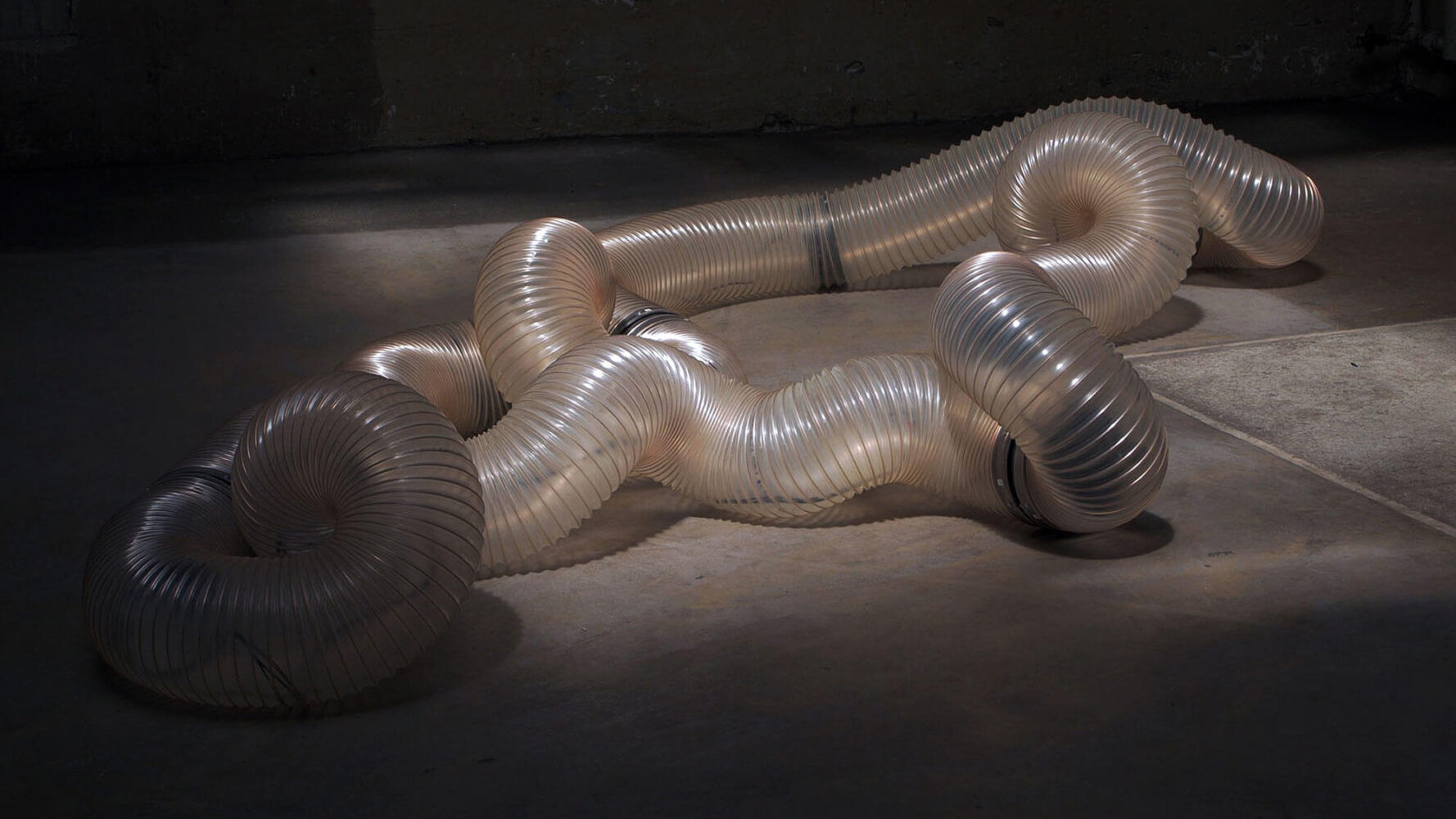
Sound Installation, 2024
The sound installation πTon/ 2 is the result of research into mechanical and sonic organicity by the artist duo Cod.Act. It shows the deformation of an elastic form and its effects on the development of a piece of music.
The artwork consists of a flexible closed ring, set in motion by torsion motors inside it. As you watch, πTon/ 2 twists and undulates in a natural and unpredictable way. The origin of the music created by πTon/ 2 is a deep sound of bass clarinet. It evolves according to its movements and is diffused by loudspeakers located inside its body. When πTon/ 2 moves slowly, its contractions produce deep sensual sounds that evolve like deep breaths. When the movements become fast, the creature develops sharp sounds along the tube, like a nervous flow.
Bios
André Décosterd (CH) is a musician and composer, who specializes in computer programming of musical applications. He studied composition systems specific to electroacoustic and contemporary music, in particular algorithmic composition.
Michel Décosterd (CH) is an artist, who began with photography and built kinetic devices that produced moving images from light and translucent material. He then left the field of images and acquired more skills in the field of material technology and mechanics. Michel concentrates his sculptural research on the machine, in particular on movement, and invents and builds kinetic sculptures. Since 1997, the two brothers have been collaborating as the artistic duo Cod.Act based in Switzerland.
Website: codact.ch/en
Credits
Commissioned, Association La Nef, Le Noirmont (CH)
Faulhaber Minimotor SA
Martyna Marciniak (PL)
Anatomy of Non-Fact
Installation, 2024-ongoing
Chapter 1: AI Hyperrealism (video 17:30 min)
Chapter 2: Tick, tick, tick… boom (video 12:00 min)
Anatomy of Non-Fact is an artistic research project that examines forensic science, technology, visual culture, and history in response to the widespread manipulation of fake images and videos.
Chapter 1: AI Hyperrealism focuses on the so-called “fake Balenciaga Pope” that gained significant attention during the 2023 “AI boom.” The research is compiled into an 18-minute video centered around a meticulously recreated “Balenciaga coat” from circulating fake images, along with distorted glasses, a ring, and a cross pendant missing half its chain.
Chapter 2: Tick, tick, tick… boom combines insights from an investigation into the visual misinformation surrounding the “Pentagon explosion”, which caused a brief but impactful crash in stock prices and cryptocurrency values in mid-2023. The project confronts you with our entanglement in the “social authority” of technological media and prompts a reexamination of the centuries-old relationship between images and truth.
Bio
Martyna Marciniak (PL) is an artist and researcher based in Berlin, Germany. Her practice bridges media theory, and legal imaginaries to trace how power inscribes itself through image regimes and visual infrastructures. Her work engages in a form of pataforensics—poking at the tropes of scientific and forensic aesthetics, revealing their uncertainties, contradictions, and lapses. Oscillating between sculpture, video, and animation, she writes visual counter-histories and smuggles in other ways of seeing.
Website: martyna.digital
Credits
CHAPTER 1: Written, produced and directed by Martyna Marciniak | Balenciaga Pope played by Derrick Jenkins | Hands played by Rojia Forouhar Abadeh, Martyna Marciniak, Kotryna Slapsinskaite | Sound design and score by Marco Pascarelli | Production Management: Kotryna Slapsinskaite | Videography: Hagen Betzwieser | Technical Design Consultancy: Edward Grace | Design Consultancy: Joanne Grace | Technical Consultancy: Jan Schluter from Johannes Kepler University | Supported by European Digital Deal Program, Ars Electronica and Akademie Schloss Solitude.
CHAPTER 2: Written, produced, and directed by Martyna Marciniak | Balenciaga Pope played by Ralf Schuster | Hands played by Martyna Marciniak, Kotryna Slapsinskaite | Security played by Edward Grace and Mindaugas Patapas | Sound design and score by Marco Pascarelli | Production Management: Kotryna Slapsinskaite | Technical Design Consultancy: Edward Grace | Supported by: European Digitial Deal program, Ars Electronica, Kemmler Stiftung | This project has been developed and is presented in the context of European Digital Deal. European Digital Deal is co-funded by the Creative Europe Programme of the European Union and by the Austrian Federal Ministry for Housing, Arts, Culture, Media and Sport.
Mathias Gartner (AT) & Vera Tolazzi (AT)
The Transparency of Randomness
Interactive Installation, 2020
The 27 transparent boxes, seemingly float in space, autonomously and continuously generating random numbers using dice. The natural materials in every box – cotton, wood, cork, leaves and more – influence the dice’s movement, each adding their unique layer of randomness.
Move around the installation and watch the boxes from all angles. Observe the fascinating movement inside each box, the unique properties of the natural materials, and the ramps over which the dice roll. Become an active participant by controlling the dice. Scan the QR codes on your phone and follow the instructions to activate one box yourself.
Random numbers are essential for numerous technical applications in the fields of artificial intelligence and scientific simulations. However, algorithms, and therefore computers alone, cannot generate true randomness, as they always follow rules to perform calculations. Nowadays computers are powerful enough to execute complex algorithms capable of producing numbers that are “random enough” for all practical purposes. Nevertheless, machines that can generate truly random numbers also exist in nature, and scientists turn to use sources of uncertainty and chaos found in the natural world. The Transparency of Randomness is a unique artistic interpretation of such a machine. It uses natural elements to create randomness in a playful and engaging way.
Bios
Vera Tolazzi (AT) lives and works in Linz, Austria. She has a background in visual communication from the University of Art and Design Linz and currently works as a user experience designer. Experimentation with different materials and the fusion of analog and digital media play an important role in her work.
Website: www.veratolazzi.com
Mathias Gartner (AT) lives and works in Linz, Austria. He holds a PhD in physics from Johannes Kepler University and is currently working as a researcher in the field of Quantum Computing, where simulations based on random numbers accompany his daily studies. The Transparency of Randomness is analogous to his work and shows the relevance of randomness to current research.
Credits
Artists (research & development): Mathias Gartner and Vera Tolazzi
Co-funded by: Upper Austria and the LIT Linz Institute of Technology
Realized at the Institute for Theoretical Physics, Johannes Kepler University
Partners: David Eilmsteiner, Andreas Ganhör, Michaela Haslhofer, Gabriel Häusler, and badcap.at
Noor Stenfert Kroese (NL) & Amir Bastan (IR)
FadingColours
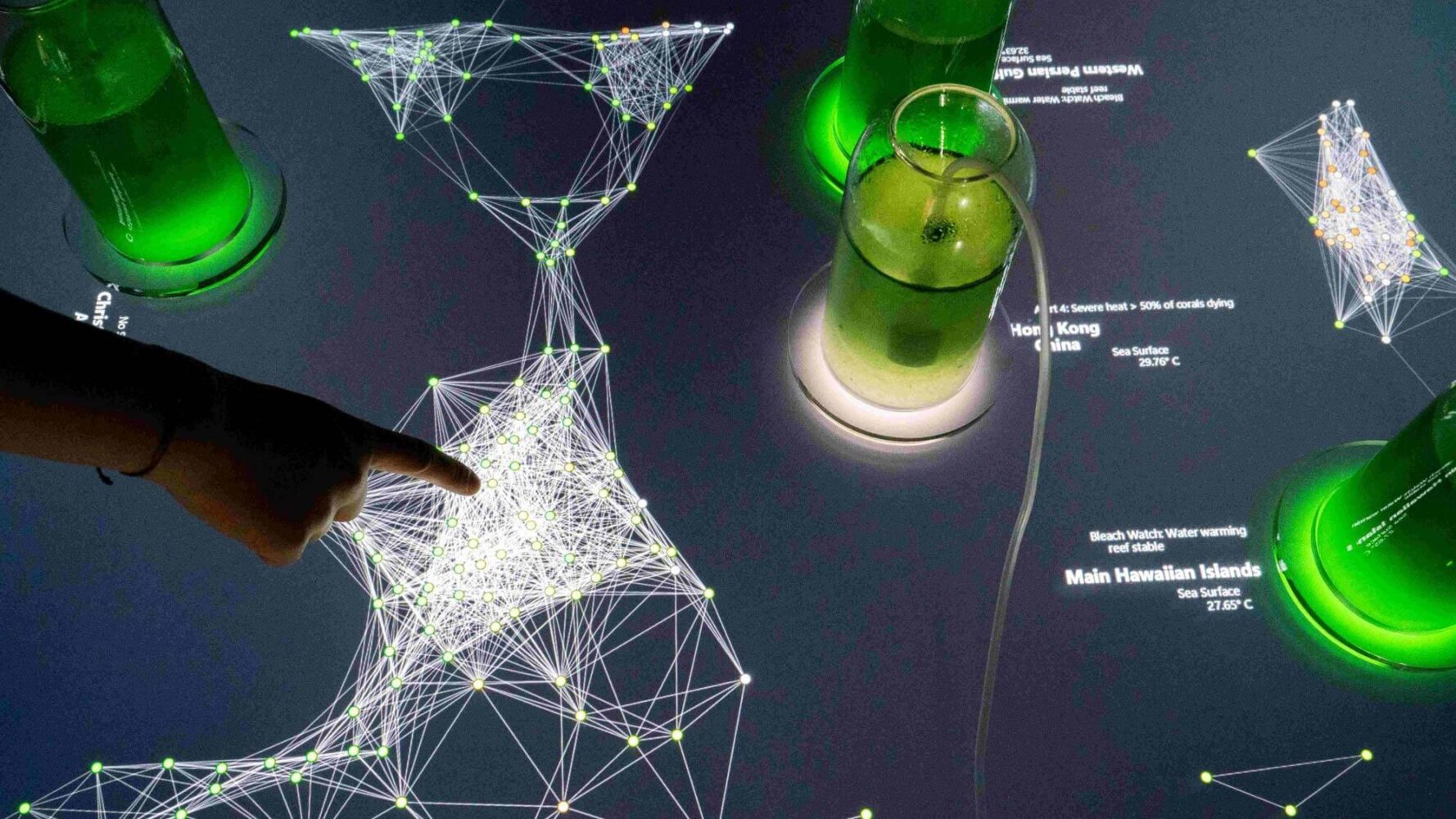
Living data sculptures, 2022-2024
The interactive installation FadingColours combines living algae cultures with data on coral bleaching in the world’s oceans, thus reflecting the situation of algae below the surface of the sea in real time.
Coral reefs not only provide protection and a habitat for numerous underwater species – they also live in close symbiosis with algae cultures and obtain their nutrients from them. The climate crisis is altering the living conditions of the algae. If they disappear, the lack of nutrients in the coral leads to bleaching and our world literally loses its colour.
FadingColours is an interactive installation that connects living algae cultures with data from the National Oceanic and Atmospheric Association’s (NOAA) Coral Reef Watch. NOAA is a database used for monitoring and researching coral reefs worldwide, relying on data collected via satellites. The algae in front of you are exposed to the same environmental conditions — temperature, oxygen levels, and light — as their counterparts in the coral reefs to which the five vessels are linked. Their condition therefore reflects the state of their species and the corals beneath the ocean’s surface.
Bios
Amir Bastan (IR) is a new media artist with a background in Fine Arts and Philosophy. He is a researcher and lecturer at the Creative Robotics department at the University of Arts Linz. Human Robot Transference is the centerpiece of his current research, drawing parallels between psychoanalysis theories and human-robot interaction within the context of new media arts.
Website: amirbastan.com
Noor Stenfert Kroese (NL) is a new media artist, scenographer and PhD candidate at Creative Robotics at the University of Arts Linz. Her current research focuses on data storytelling of/with living organisms, fungi-inspired biocomputing, and other-than-human interactions with industrial robots.
Website: www.stenfertkroese.com
Credits
NOAA Coral Reef Watch
Text for audio/children – Lisa van der Hoeven
Piksel exhibition participation
bit.studio (TH)
FLOCK OF
Interactive performative installation, 2024
FLOCK OF seeks to inspire by fusing art and technology, challenging perceptions and sparking curiosity by transforming a school of fish into a flock. Helium-filled balloons, each with an electronic brain, create an aerial spectacle, continuously receiving signals from sensors and sending data to a central server.
This server guides their movements in real-time using advanced modules for navigation, detection, and communication. This blend of physics, mechanics, electronics, programming and network systems results in a mesmerizing display, highlighting the potential of interdisciplinary innovation. Through its cultural and scientific layers, FLOCK OF invites you to reflect on interconnectedness and collective behavior, and on the ever-evolving nature of our world.
Bio
bit.studio (TH) is a creative technology studio fully committed to integrating technology and art into creating enjoyable experiences in the form of interactive installations using various technologies such as machine learning, computer vision and computer graphics. bit.studio is based in Bangkok and brings together experts from fields such as engineering, design, art, and science since 2012.
Website: bit.studio
Credits
bit.studio
Imelda Kuyumcu (TR) & Gözde Betülay Yorulmaz (TR)
Fragmentation
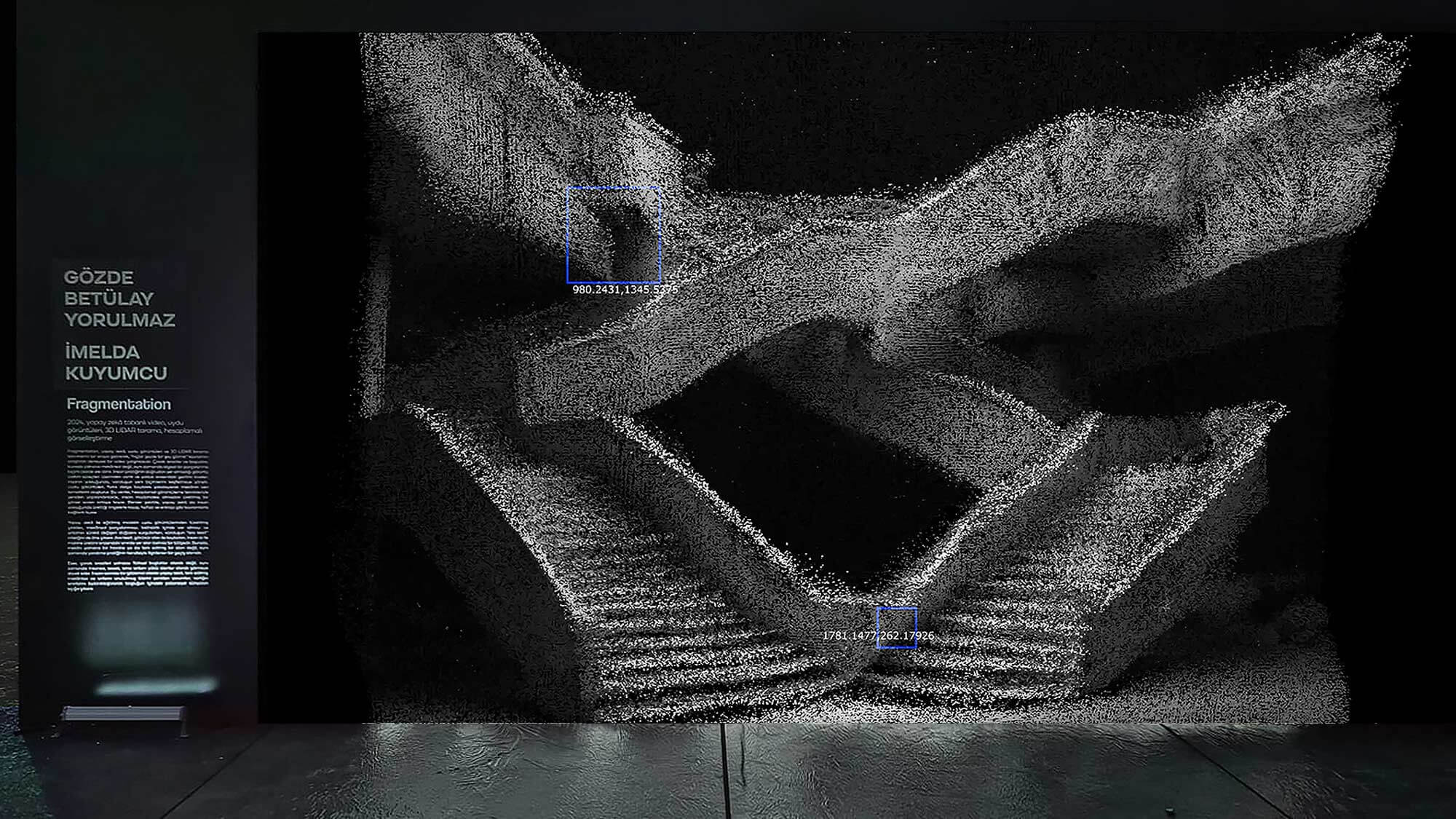
Two-channel video installation, 2024
Fragmentation is an experimental video installation that combines AI, satellite imagery and 3D LIDAR, a technology that uses lasers to measure distance. It re-reads urban fragments and wastelands through a posthuman lens, examining presence and absence via detached image processes. Satellite imagery captures wavelengths to create spatial data, reconstructed through computational imaging to produce a universe without human input, while AI-generated images evoke memory, loss, and entropy.
Outputs of a model trained on satellite imagery highlight spatial fragmentation, uncertainty, and shifting meaning, emphasizing the intersection of visible and disappeared, human and machine traces. This work invites you to see wastelands as silent, meaningful spaces where AI reinterprets forgotten traces, revealing potential worlds within cyber-urbanisms. It shows how technological systems perceive, archive, and reinterpret human absence, opening a negotiation between data and collective memory.
Bios
Gözde Betülay Yorulmaz (TR) studied Architecture at Gebze Technical University. Her practice explores hybrid spaces through algorithms, cybernetics, artificial life, and complex systems, focusing on adaptive interfaces, biodigital mechanisms, simulations, and human-machine interactions.
İmelda Kuyumcu (TR) studied Painting at Marmara University, also minoring in Industrial Product Design.
As an artistic duo they explore the intersections of nature, technology, and human experience. They have exhibited at Eskizden Piksele Human Edition (AKKM, Bursa), Eskizden Piksele Anatolia Edition (Galataport, İstanbul), IMM Media Artist (Taksim Sanat), and SALT Forecast Condensed (SALT Beyoğlu, İstanbul).
Credits
Fragmentation, 2024, two-channel video installation, AI, satellite imagery, 3D LIDAR scanning, computational visualization, 3840×2160 pixels.
Ceren Su Celik (TR)
Curse of Dimensionality
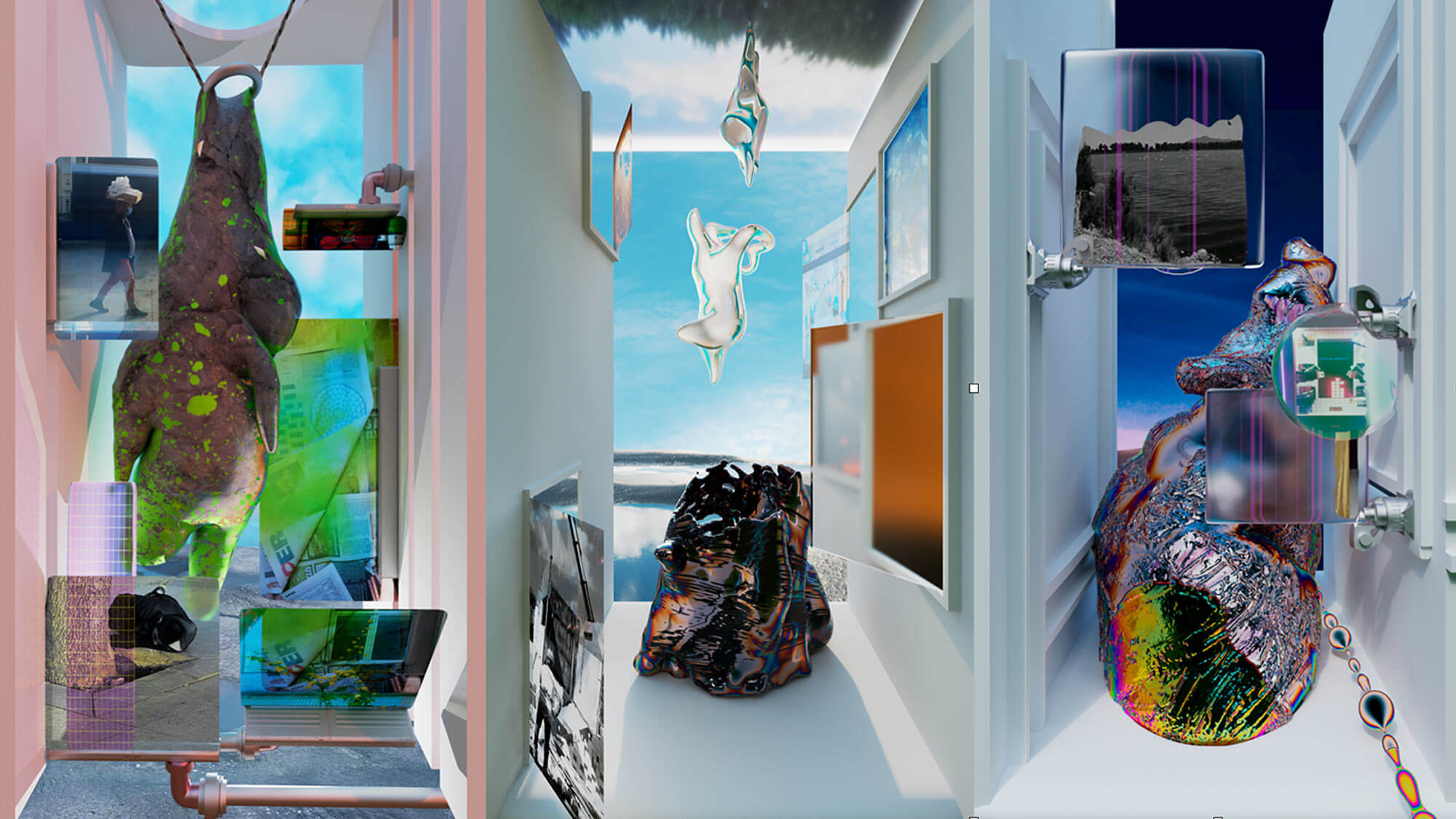
Video artwork, 2022 (8:45 min)
The term “Curse of Dimensionality”, first coined by mathematician R. Bellman, describes the problems caused by the exponential increase in volume associated with adding extra dimensions to Euclidean space. Nowadays, this term is observed in several fields such as machine learning, data analysis, and data mining. It signifies the challenges that arise from the increase in data in a multidimensional space, which is unlike the three-dimensional physical realm of your everyday life. While a higher number of dimensions theoretically allows for more information to be stored, it creates a kind of noise and is not practically functional due to the curse of dimensionality.
Here, you move through a scene divided into three rooms, entirely generated by a computer. The videos you see depict motion on a mathematical plane, indicating real-life data and representing dwellings in this multidimensional space. The sound you hear serves the same narrative purpose: voices that rarely remain intelligible, turning mostly into noise.
Bio
Ceren Su Çelik (TR) is an Istanbul-based artist working across moving image, intermedia, and speculative approaches. Her work often includes hybrid forms and reflects on the ongoing dialog between the virtual and the physical. She constructs visual forms that operate within layered systems, often tracing their entanglement with memory, materiality, and systems of control.
Website: cerensucelik.com
Credits
Ceren Su Celik, Computer generated video 8’45’’, sound with loop, 5061 x 3000 px, 2022
Özcan Ertek (DE/TR)
Future Visioning: AI Turkish Coffee Reading
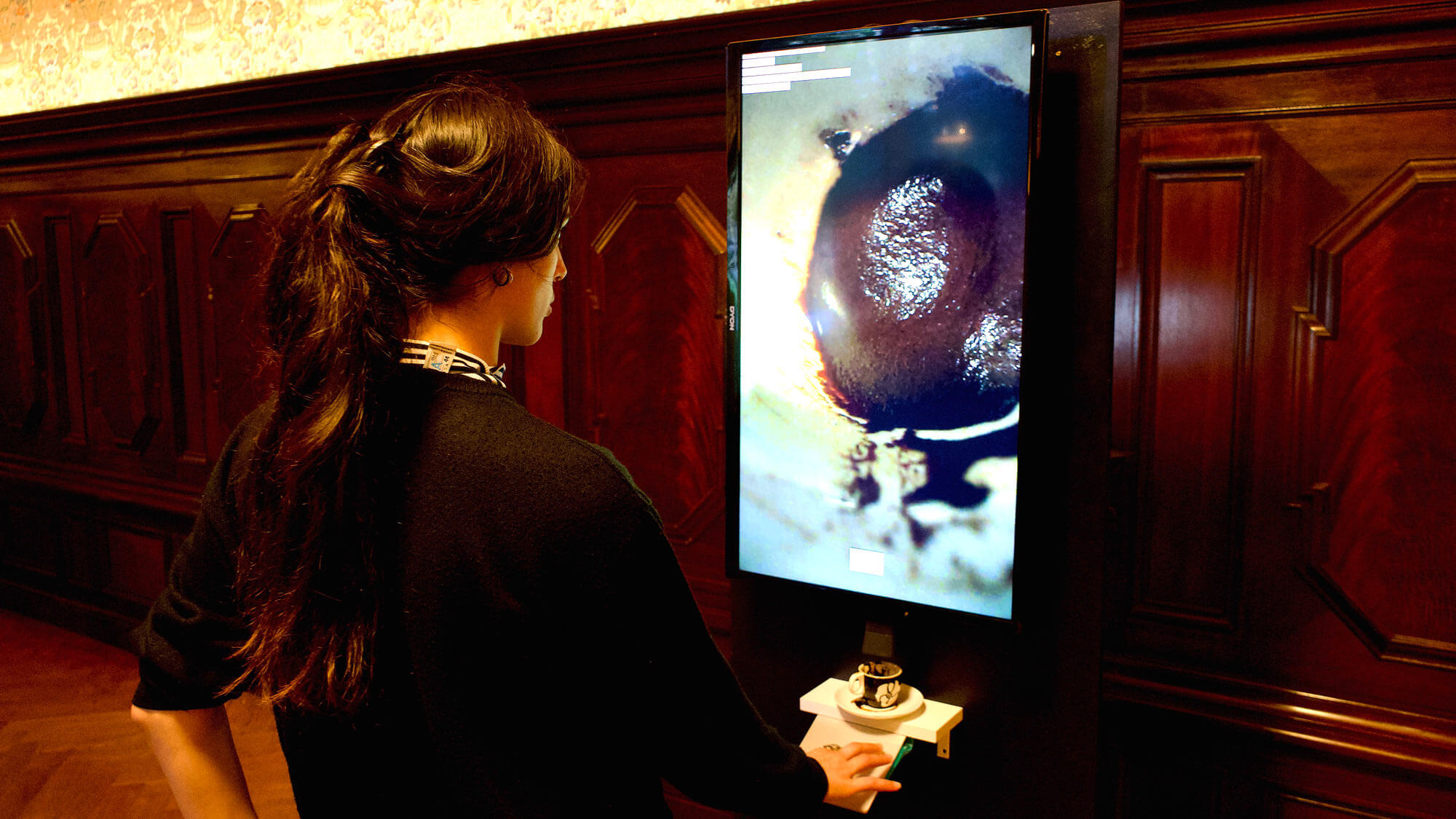
Interactive installation and performance, 2022
Turkish coffee, known as türk kahvesi, holds immense significance in Turkish culture. Future Visioning is an interactive installation that combines traditional Turkish coffee reading with AI technology. It invites you to discover the power of collective imagination in shaping a better future for both: individuals and the planet, while getting a special Turkish coffee experience.
Find out, how AI algorithms for shape recognition and symbolism stimulate your imagination and enter into a personal interaction with the underlying code and computer system. At the beginning you can choose whether you prefer to put your trust in a human or an AI system. This decision determines whether you receive a traditional Turkish coffee reading or an AI-generated interpretation of the future. The moment invites you to reflect on the dynamics of trust, intuition and the evolving role of AI.
Bio
Özcan Ertek (TR) is a Berlin-based sound and media artist with a background in mechanical engineering, exploring the intersections of technology, movement, materiality, and space. He creates interactive installations and kinetic objects that critically resonate on emerging technologies and their impact on perception, agency and embodied experience in contemporary contexts.
Website: www.ozcanertek.com
Credits
Özcan Ertek, Turkish coffee, camera, computer, python, trackpad, screen
Emre Meydan (DE/TR)
Plotter drawings from the series “clp” & “wrp”
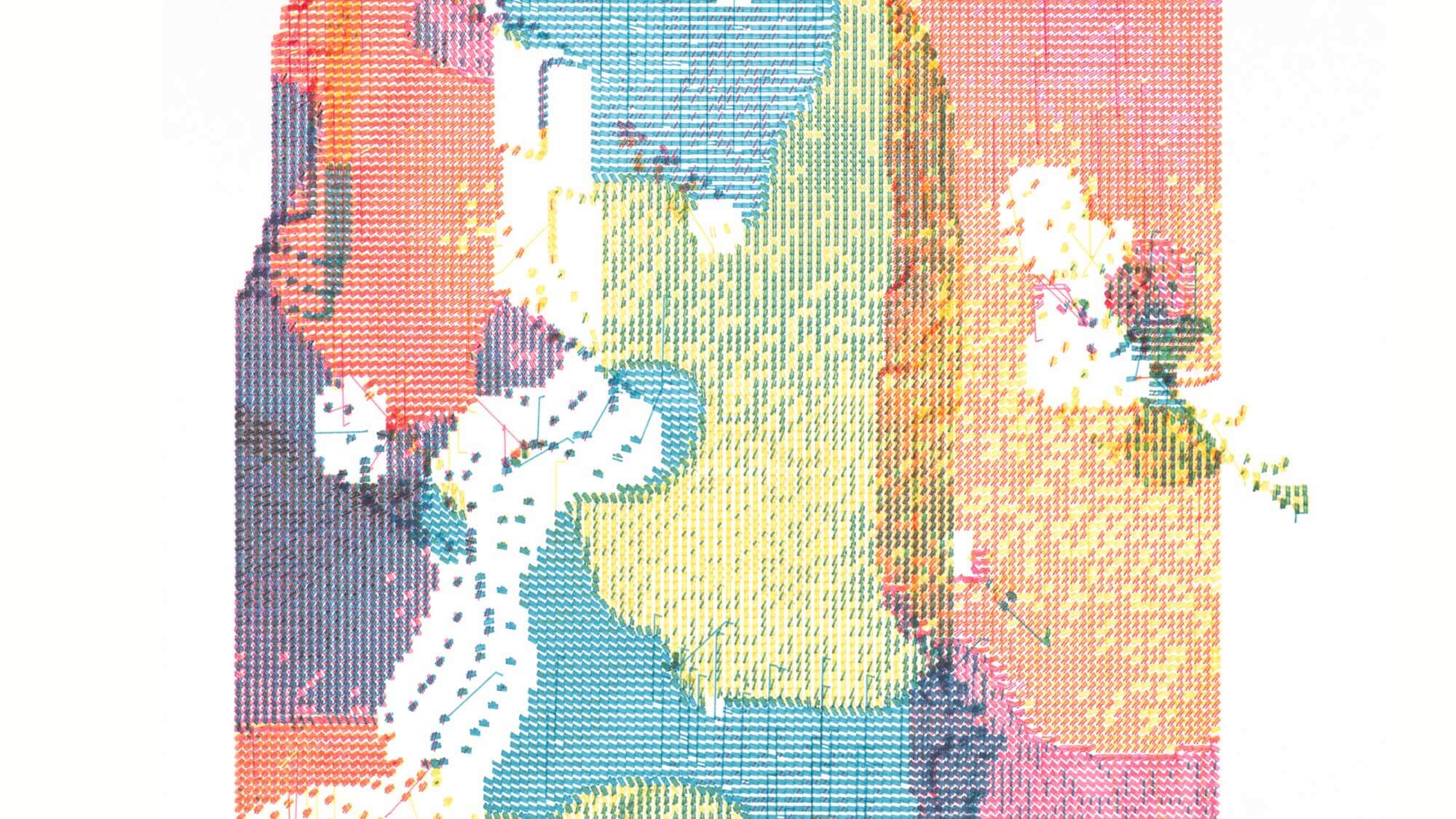
12 plotter-drawings, 2023-2025
This series of works comprise images generated by custom software developed by the artist that reproduces the behavior of light, perspective and other phenomena while bending their rules, which results in interpretations of space and light that look at once familiar and distant.
Judicious use of randomness ensures that each running of the program creates a unique image. The results are then drawn by a plotter machine on paper using fountain pens and 4-6 colored inks in a process that may take anywhere from 5 to 20 hours depending on the complexity of the image.
Bio
M. Emre Meydan (TR) is an artist exploring light and color, currently based in Germany. Having studied and practiced painting, he’s especially interested in creating a sense of light and space on 2D surfaces using physical media. Meydan develops custom software that generates images according to certain rules. He then utilizes plotter machines to draw these on paper with multiple inks, transforming them to physical objects. Alongside his software-based art, he has an extensive portfolio that includes paintings, photography, video, and sound projects. Meydan studied Painting at Dokuz Eylül University’s Faculty of Fine Arts in Izmir, Turkey, after which he pursued his higher education under the mentorship of Heike Kati Barath at Hochschule für Künste Bremen in Germany.
Credits
Emre Meydan
Workshop, Performance and Screening
Workshop
Martyna Marciniak (PL)
Anatomy of Non-Fact – The Board Game
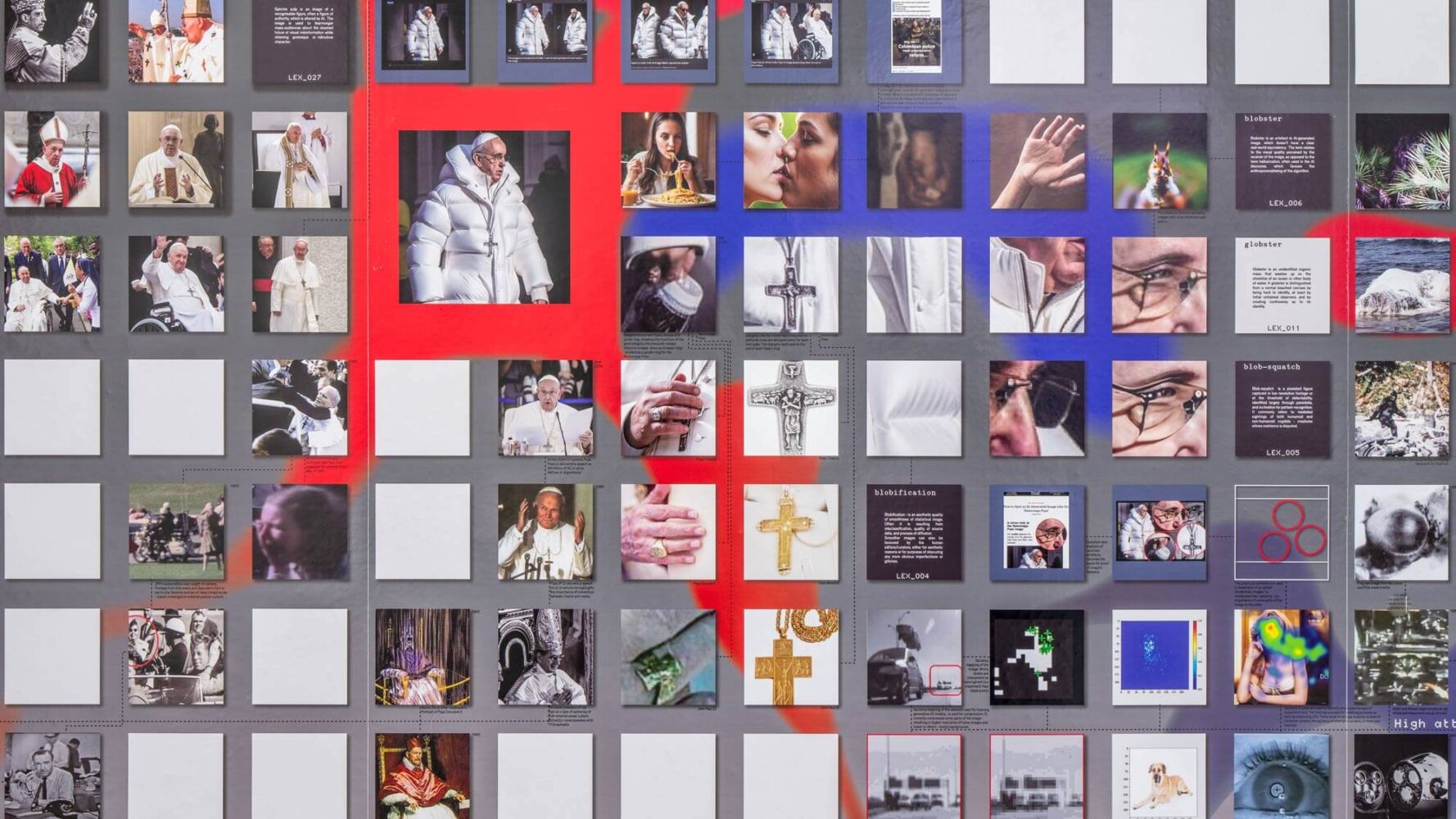
As part of the exhibition, you are invited to join artist Martyna Marciniak for a workshop and game session exploring the topics of aesthetics of truth and visual disinformation.
As consumers of visual media we interact with each image on our feeds for less than 3 seconds, on average. In that short duration we are unable to engage with the images critically, to counter their affective impact. As part of the workshop, the artist will present her artistic research, the Anatomy of Non-Fact visual archive, as well as her compiled glossary as working tools. You will get a hands-on opportunity to find patterns among seemingly disconnected images and track the changes in the benchmarks of the visual reality, as well as the technical and cultural evolution of synthetic images.
Participate in a collective board game to learn how to engage with the alternative, slower modes of seeing, to name different types and qualities of synthetic and evidentiary images and to find empowerment in visual literacy.
While post-truth framing of visual evidence encourages dismissal of the ‘fake’ image, while we’re waiting for the authorities of truth to define categories of visual fact, and while the contours of trustworthiness are constantly shifting, this workshop shows that there is a value in staying with the fake.
The workshop will be in English and requires no preparation or specific knowledge. It is open to all but has limited capacity up to 15 participants.
Please find the workshop date and time as well as more information here.
Laura Welzenbach (AT)
Sensing Data Fragility – A Workshop Exhibition Tour
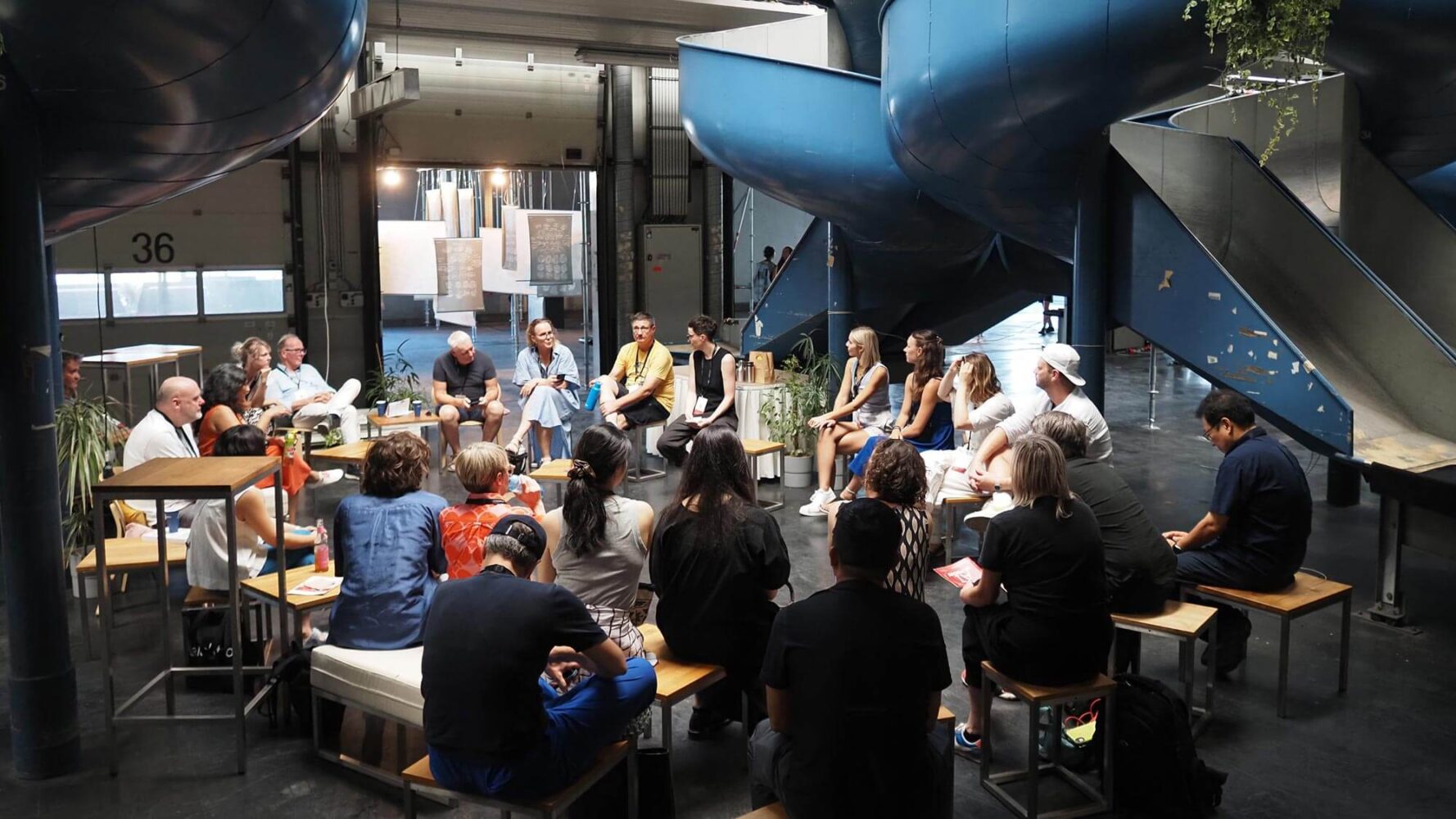
“Sense-making through sensing” is the strategy that will guide us through the tour. We will experience the artworks with all our senses and critically challenge what they make us believe. Join curator and Head of Ars Electronica Export Laura Welzenbach for the Data Fragility Exhibition Tour.
The one-hour long workshop will be in English and no preparation or specific knowledge is needed.
Please find the workshop date and time as well as more information here.
Performance
Cod.Act, André Décosterd (CH) & Michel Décosterd (CH)
πTon
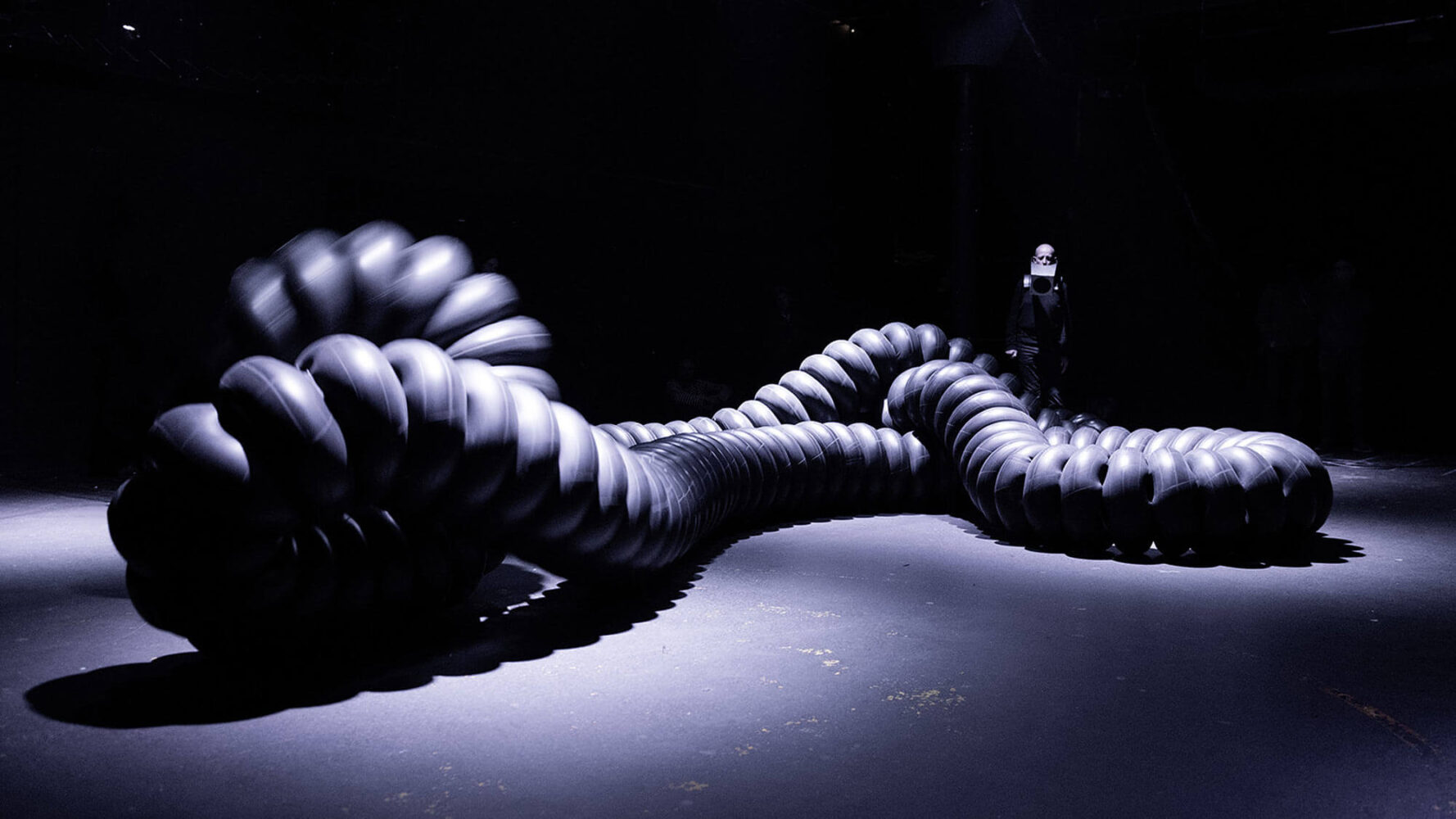
πTon is a sound installation and the result of research into mechanical and sonic organicity by the artist duo Cod.Act. It results from an experiment on the relation between the distortion of an elastic structure and a real time human voice synthesis.
A long rubber tube, closed in a loop, is animated by contortions and undulations like an invertebrate body. Surrounded by a group of four dumb human beings equipped with loudspeakers, the creature seems to try to release itself from this disturbing presence in vain. Its efforts and suffering excite the curiosity of the four human beings and become the subject of primary and sophisticated polyphonic rituals only constituted by synthesized voices.
From raw materials and natural physical phenomena, πTon associates organic movement and vocal expression under their most primitive forms. The result is a striking sound and visual event that draws you back to the origins of our human behavior.
Please find the performance date and time as well as more information here.
Screening
Various Artists
Ars Electronica Animation Festival 2024 on Tour
The Ars Electronica Animation Festival On Tour showcases recent artistic trends in the field of digital animation. The selection, compiled of the submissions at Prix Ars Electronica 2024 in its recently renewed category New Animation Art demonstrates the transformations and dynamics occurring within the field of animation.
From the nearly 900 submissions, around 45 projects were selected and showcased at Ars Electronica Animation Festival in September 2024. More than a half of them have been included in the On Tour program, and available now as four outstanding compilations: Best-Of Prix Ars Electronica, Austrian Animation, Young Animations, Science and Data Visualizations.
Even more strongly than previous years, one could observe the tendency of many creators to utilize specific tools (such as Stable Diffusion, Midjourney, DALL-E, Sora, Runway, or ChatGPT) in a self-reflexive manner enabling critical commentary on the socio-technical nature of these systems and their impact on our society. Moreover, we noticed that a remarkable one-third of the submissions were projects created using AI tools or centered around AI as a theme – the highest number to date.
Please find the screening dates and times as well as more information here.
Partner and Venue
Zorlu Performing Arts Center
Zorlu Performing Arts Center has illuminated the arts scene with vibrant and transformative experiences, captivating performances and eclectic exhibitions that showcase the brilliance of global artists and cultures for twelve years.
Through dynamic and innovative collaborations with esteemed institutions and artists, both nationally and internationally, Zorlu PSM has cultivated a platform that amplifies the voices of emerging artists, invites exploration and inspires audiences to engage in creative dialogue. The steadfast dedication to the arts has enabled the organization to offer an awe-inspiring stage that elevates imagination and nurtures the transformative power of the arts.
Zorlu PSM has welcomed over five million cultural enthusiasts to date and is a cornerstone of Turkey’s thriving cultural and artistic landscape. Through the unwavering dedication to innovation, quality and creative excellence, Zorlu PSM offers a rich tapestry of cultural events, from world-renowned musicals to celebrated musicians, from grand theatrical productions to intimate one-person shows.
Piksel
A team of artists, designers, architects and creative technologists, Piksel. Creative Solutions offers a wide range of projects from media art- focused events to curation, from technical production to communication design. In a short period of two years, Piksel. Creative Solutions aims to redefine the boundaries between art and technology.
In its first year, Piksel. Creative Solutions gained attention by organizing the Istanbul exhibition of Ars Electronica, one of the most important digital art festivals in the world, at Çubuklu Silos. This event, which was extended two times and reached 130,000 visitors, was one of the first big steps of the team’s creative vision.
The same year, Noise_Media Art, Turkey’s first media art fair, was launched, bringing together 16 galleries from 8 countries and more than 200 works by 123 artists. This success was followed by numerous international collaborations and resulted in initiatives like a New Media Residency Program and the Piksel.Studio, supporting early career artist.
Ars Electronica
Ars Electronica is a platform working at the intersection of art, technology and society through organising exhibitions, educational programmes, and research projects focused on the future of our societies. Founded in Linz as a festival in 1979, it has since expanded to include a laboratory, an award, and a museum dedicated to the study and promotion of media arts as well as digital culture.
Credits
Team Ars Electronica
Co-Curator and Producer: Laura Welzenbach
Co-Curator and Manager: Marlena von Wedel
Tech Lead: Klaus Dieterstorfer and Florian Cossee
Special thanks to …
the artists of the exhibition and their assistants and supporters.
the Zorlu PSM team for believing in the Ars Electronica mission and the incredible opportunity to present a shared vision with their community in Istanbul.
the Piksel. Creative Solutions team for them continues collaborative spirit, dedication and engagement.
the Ars Electronica team and in particular to Daniela Duca De Tey, Veronika Liebl, Christl Baur, Karl Julian Schmidinger, Katia Kreuzhuber, Martin Hieslmair, Gregor Tatschl, Christopher Sonnleitner, Gerfried Stocker, Markus Jandl, Stephan Kobler, Robert Anderle.
